The Saturday Matinee

The Saturday Matinee is a new partnership between the Seamus Heaney Centre and our friends at the Queen's Film Theatre. Each week one of our students, alumni or staff gets an opportunity to engage with new and independent cinema.

Reviews of films that may not easily attract press attention.
With an emphasis on new writers on screen.
Thoughtful and original writing, with considered arguments and clear ideas.
Brevity! (2000 character limit, including titles and tags)
The Saturday Matinee should be an 'informed friend', opening up discussion on new films and scriptwriters.
Send submissions or enquiries to Darcey at - shc@qub.ac.uk

The opening credits of "Pillion" intrigued me as first-time director Harry Lighton takes the audience on a less-than-thrilling drive along a British motorway with Harry Melling, who convincingly and tenderly plays Colin, a timid 35-year-old gay man.
Colin struggles for autonomy, as he takes on a submissive role in a BDSM relationship, with the ludicrously handsome Ray, played by Alexander Skarsgard.
From the outset, Lighton explores themes of being trapped, highlighted by Colin’s date, chosen by his dying mother, who wears a quirky "Alexa Free Britney" t-shirt. At 35, Colin still lives with his overprotective parents, which I believe has contributed to his childlike adherence to authority.
Throughout the film, Colin often appears overwhelmed, tasked with pleasing Ray, who imposes strict demands, such as requiring Colin to sleep on the rug and always to wear a heavy dog chain around his neck. During Colin’s first penetrative encounter, his pain and apology, “I’m sorry I didn’t realise it’d hurt so much,” are poignant, revealing his repressed sense of self and willingness to accept blame, even when not at fault.
While there are humorous moments, I often felt immense discomfort watching Ray dominate Colin. Despite being consenting adults, Ray’s control raises ethical questions, particularly because Colin was a virgin before meeting Ray and his vulnerabilities are underscored by his mother’s terminal illness. At times, I felt that some explicit sex scenes were included to compensate for the film’s slow pace. Nevertheless, I was never bored, and the acting was outstanding.
I inwardly cheered when Colin rebelled by taking Ray's bike, an act that earned him “a day off”, where Ray shows tenderness, sharing popcorn and showing Colin affection at the park. The day culminates in Ray allowing Colin to kiss him for the first time.
Although Colin is 35, for me "Pillion" presents a challenging coming-of-age story as Colin breaks free from his parents and learns to assert his own conditions in the BDSM dating community. I can’t say I enjoyed this film, but it was thought-provoking and deeply moving.
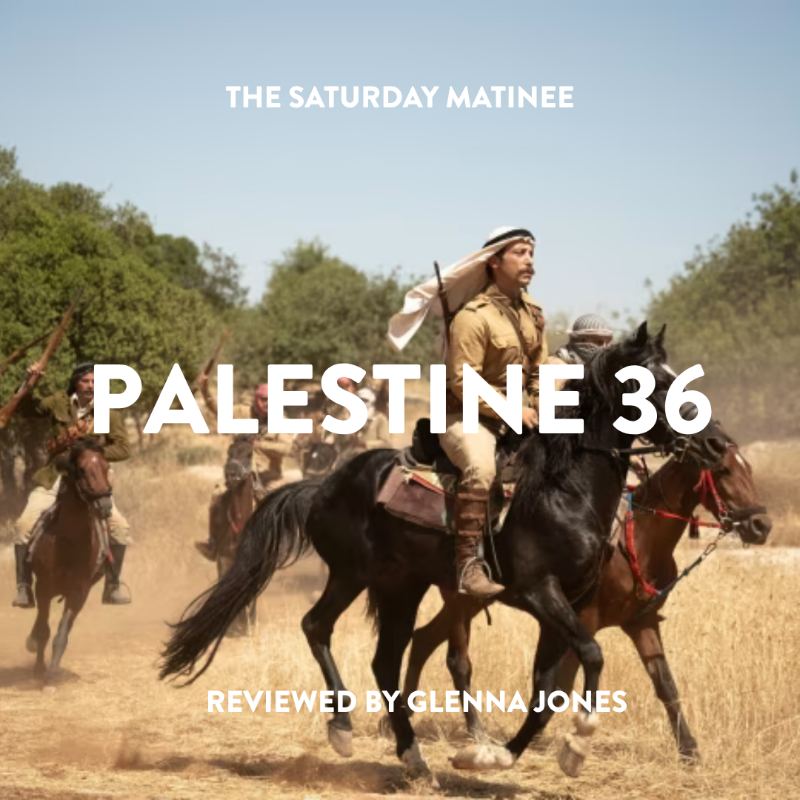
‘Palestine 36’ is about the individual, internal revolutions necessary to enact larger revolution.
It’s a film about power. The extreme extent that powers-that-be (the empire, the wealthy) will go to maintain and expand their control, and what it looks like for those without power to build their own sources.
The film moves beautifully from scene to scene shot on location in Palestine. We get a feel for the land the farmers work on, the dailiness of the villages, who knows who. There is no true main character. The film weaves seamlessly in and out of different characters’ lives, who each in turn feel like the new main character. This increasingly allows the audience to experience the story from a collective viewpoint. It also allows us to experience the breaking point at which each character chooses rebellion–usually in relation to the extent tragedy hits their life, as well as their economic status. And those things, in turn, are linked.
By the end, the rebellion has worked its way up to the wealthy Palestinian journalist, Khouloud, who has spent much of the film in the parlour of her glamorous city home having playful political debates with her zionist-sympathiser husband, Amir.
But the trouble has made it to their door now. Plans for partition sound over the radio. The lights go out over their elegant dining area–the rebels have cut the electricity to the city. As they rush to the windows, we hear the sounds of galloping horses and rebel yells in the dark. “Come on boys. Go for it”, they urge, clutching the curtains.
One of the final images of the film is of Khouloud giving Amir back her wedding ring, and walking away from him to join the throngs of a protest. There’s relief on her face. Relief, it seems, in putting debate to one side, in knowing what she stands for, and in decidedly, physically standing for it. The camera pans out as she becomes indistinguishable from the many bodies marching together. It’s 1936, but it's an image that immediately resonates with the modern viewer. Which, I’m sure, is exactly its intent.

I am happy to report that this is a fantastic film, but is it the definitive Frankenstein adaptation? No. Is that a bad thing? Also no.
This is Guillermo del Toro’s Frankenstein through and through. His love for the monstrous and gothic permeates everything, from the costumes to the set, and the dialogue. It is clear that a lot of time and passion went into creating this world, and there is an earnestness that invites the viewer to hear the creature out before casting any judgment upon him.
This is the adaptation that sticks the closest to Mary Shelley’s original text, however that is not a very high bar. Most adaptations greatly differ from the novel and Del Toro takes liberties with the text, such as making Victor’s father cold and cruel to him, to tell the story he wants to tell: a story of fathers and sons and cycles of violence that we must break if we are to call ourselves ‘human.’
Because cruelty makes us monsters, according to both Shelley and Del Toro, we lose our humanity once we think we are above and are justified in hurting others. Both Victor and the creature are victims of this in the book. However, I found Del Toro to be much more forgiving of the creature, the murders he commits are rooted in self defense rather than revenge. On the other hand, Victor becomes a bit more villainous, an abusive father rather than an absent one (and to be fair to Del Toro, Victor has always been the more sinister figure between the two).
Even so, Mary Shelley’s message about the dangers of playing God are alive and well in this film.
I have not stopped thinking about this film since I saw it and isn’t that what art is supposed to do? Make us question ourselves over and over again? I will be watching 'Frankenstein' again, so that many more answers (and questions) may arise.
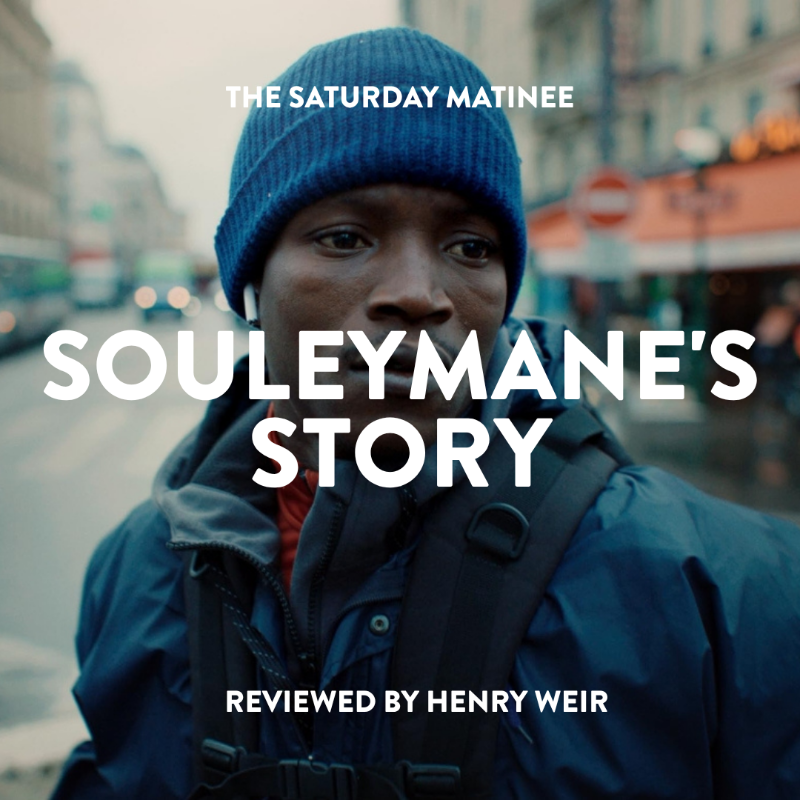
I’ll admit, I didn’t expect ‘Souleymane’s Story’ to be such a tense watch. I’d read the summary - Souleymane, a Guinean migrant, has two days left to prepare for his asylum interview while working as a courier for a food delivery app.
I had formed expectations; a feeling of placelessness, a few emotional gut punches, a strong central performance by critically lauded breakout actor Abou Sangaré.
That’s not to say ‘Souleymane’s Story’ didn’t fulfil those expectations – I can confidently say they were met, if not exceeded – yet I was at the edge of my seat watching the movement of Paris traffic, anxious over the rattling of a potentially broken bike, feeling frustrated at every delay.
Perhaps I should have anticipated this urgency. After all, the film portrays the depressing reality of a precarious reliance on the gig economy. For me it succeeded in doing so, as I entered into a mentality where time was the enemy, and every delay was a threat.
It is made painstakingly clear that this freneticism is necessary. The interview process Souleymane faces could give the lifeline of a right to work. Yet to him and those he asks about it, it is an arcane “exam”, where success seems arbitrary except for the fact that certain narratives are valued above others.
So, Souleymane rehearses a fictional political trauma, which he is desperate to prove with documents. He needs money to pay for these documents, yet he has no right to work and must instead “lease” an app account for an extortionate fee. It’s a Catch-22, one which clarifies the horrific devaluation and resulting invisibility of migrant workers who lack entirely “correct” narratives.
The film makes visible these experiences: Abou Sangaré’s quietly powerful performance as Souleymane is the near-constant focal point of the camera. Despite the pressure to remember a fictional “story”, there’s an intriguing choice to not relate Souleymane’s history until the end of the film.
When it comes, of course, it’s emotional – but wisely made unnecessary. Ironically, the film asks you not to sympathize with a story but empathize with a person – and it does so remarkably well.
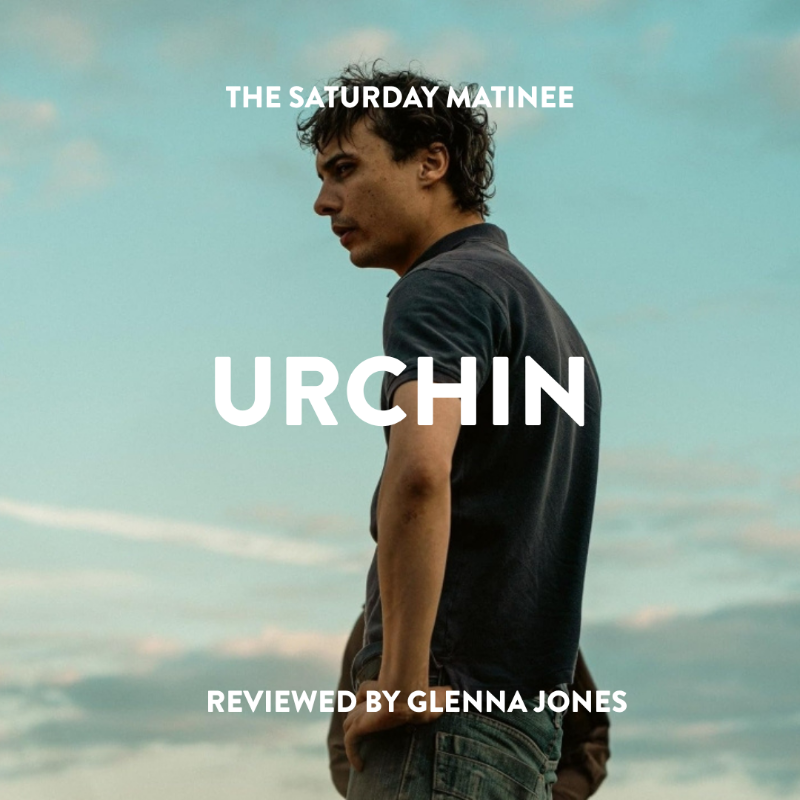
One of the first images that struck me in Urchin is of the protagonist, Mike, setting up his sleeping arrangements for the night.
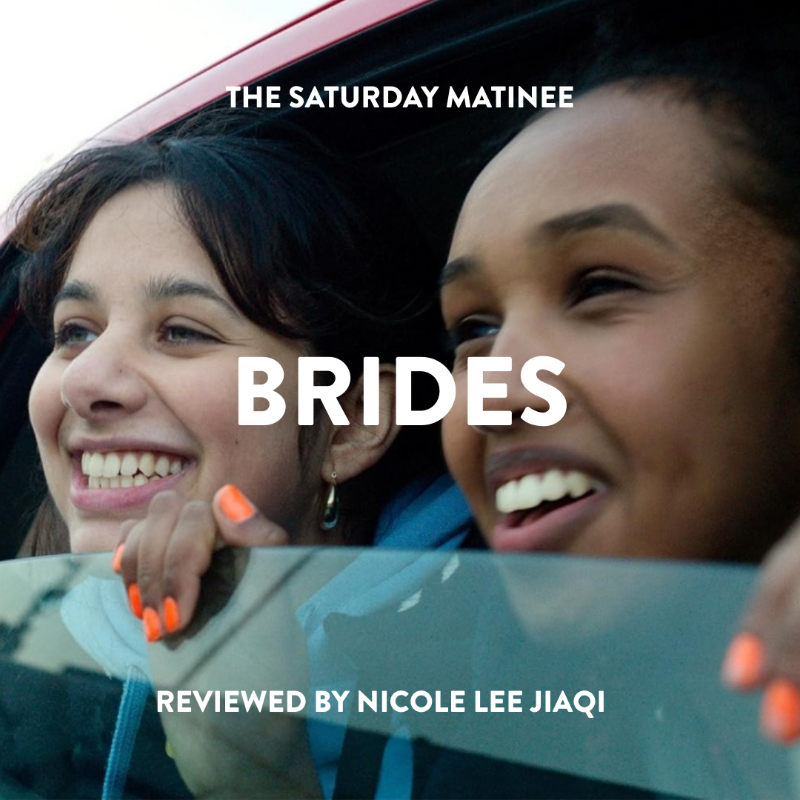
Human desperation - that was all I could think about throughout Nadia Fall’s debut film, ‘Brides’. Two teenage girls, Doe and Muna, leave Britain for a dangerous journey, travelling across Turkey to Syria.
A place where there would be no disdain towards the hijab, the hijab which had Muna saying:
“Looks like you just got off the boat!”.
That was how Doe and Muna met. Sharp words spoken by one Muslim girl to another. The hijab, for Doe, marks faith and identity. For Mona, it is a symbol of stigma, something to reject to fit into Western society. Later, Doe removes her hijab after it was painstakingly pulled off by a bully. This act of removal reflects the desperation to be seen, accepted, and validated. But in Britain, even after removing the hijab, the girls never were
“one of us.”
Despite their outward difference in appearance pertaining to the hijab, Doe and Muna become closer than friends. They become “sisters” - painting each other, laying on the mattress together, arguing, running away from the police together, arguing again. They’re tied together through the messy, tender cohesion of their miserable lives in Britain, and as they make the decision to travel across Turkey, they hold an underlying belief that:
“Our own families can’t understand our choices.”
The caption was written under a video which showed bombings as well as physically and emotionally broken children. Social media complicates this further, presenting Syria as a place of solidarity and home. The journey towards it, however, is a haze of madness; exhaustion and chaos that grips Doe and Muna every step of the way. Lost passports, stolen money, blind eyes as a man gropes a waitress– the unfolding of a queasy, quiet horror. It creeps in, unrelenting. It never leaves. Not Doe and Muna. Not me.
Throughout ‘Brides,’ I found myself holding my breath. One obstacle after another unfolded relentlessly, and my deliberate use of quotes mirrors Fall’s portrayal of the girls’ continuous weight of their lives: a string of voices, memories, judgments, and yearnings, all pressing toward a singular, heartbreaking, desperate human desire - to belong.
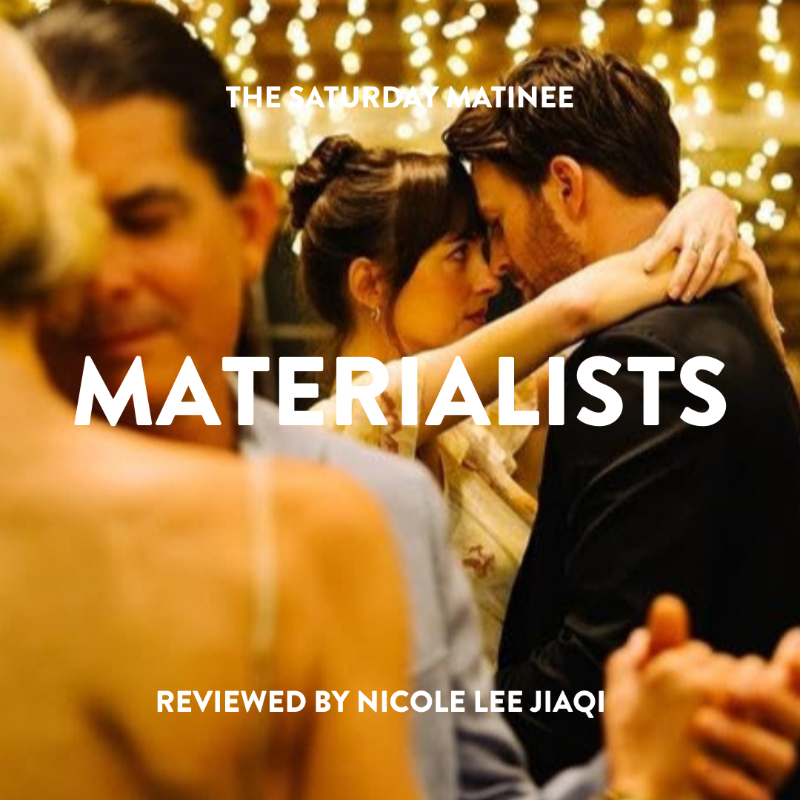
As I emerged from the theatre, the thematic weight of ‘Materialists’ by Celine Song lingered heavily in my mind – the characters, conversations, and the question it raised: Is loneliness, to some extent, a cultural construct, shaped by a capitalist society that insists we are incomplete on our own?
In protagonist Lucy’s world, through corporate matchmaking; in ours, through dating apps and its persuasive marketing strategies.
This is not to suggest that love is unnecessary. On the contrary, it remains essential to human nature. As Song herself asserts, “Love is meaningless unless it’s unconditional. And that, to me, is non-negotiable.” The film simultaneously critiques the impatience of contemporary society, our desire to accelerate intimacy, and the persistent notion that being single equates to loneliness. “Why does anyone even get married?”, “Because people tell them they should. Because they’re lonely.” In this way, loneliness is amplified, becoming an almost universal imperative rather than an individual experience.
Through the lens of Freud’s psychoanalytic theory, Lucy Mason identity, shaped by poverty and unfulfilled dreams, drives her materialistic desire toward wealthy but emotionally unavailable financier Harry Castillo. When her ego rationalises and integrates her emotional needs, she ultimately chooses her ex-boyfriend and failing actor, John Pitts: the superego triumphs. Yet her decision, while morally and emotionally justified within the theory’s framework, left me unsatisfied. Thus, the answers to my earlier question emerges: Loneliness, to a considerable extent, is culturally constructed, exaggerated by external pressures rather than innate human deficiency.
Lucy’s marriage to John embodies a paradox: she is freed from materialistic impulses yet submits to societal scripts, rushing toward old connection without first seeking it inwardly, or exploring other outward possibilities. Even seemingly rational choices are seldom free from cultural influence. This is not a condemnation of Song’s film. Rather, it is a critique of our society where emotion is rationalised into obligation – a phenomenon to ponder.
-800x800.png)
I am not afraid to admit that as a Canadian guy who has yet to go to Cork, I was unsure that I would come out of this film and be able to find much to say. But, ‘Christy’ directed by Brendan Canty is a strong debut feature and I definitely have a lot to say.
While the titular character, seventeen-year-old Christy, is the focus of the film. The film also builds up a solid community of characters around Christy as he approaches his eighteenth birthday, with strong performances from the entire cast. Particularly Danny Power in the Titular role of Christy, who delivers a layered performance even during stretches where the character uses remarkably little dialogue.
To me though, the film's greatest strength is its empathy. The majority of characters we meet (and some we only hear about) are given a great deal of depth considering the screen time most of them get. This is a drama for people who may not be drawn to your stereotypical drama's. ‘Christy’ will often sneak in a laugh or smile for you. For me, Robot always appeared and said something that made me laugh and would sometimes offer some really heartfelt advice. The script (by Alan O'Gorman) and Canty’s direction harmonize drama and comedy. It’s always refreshing to see a drama focused on the healing and rebuilding and not the active suffering of its characters.
If you're a fan of optimistic dramas, I would recommend checking ‘Christy’ out, and definitely don't run out of the theatre at the end, the credits were a fun surprise I was not expecting.
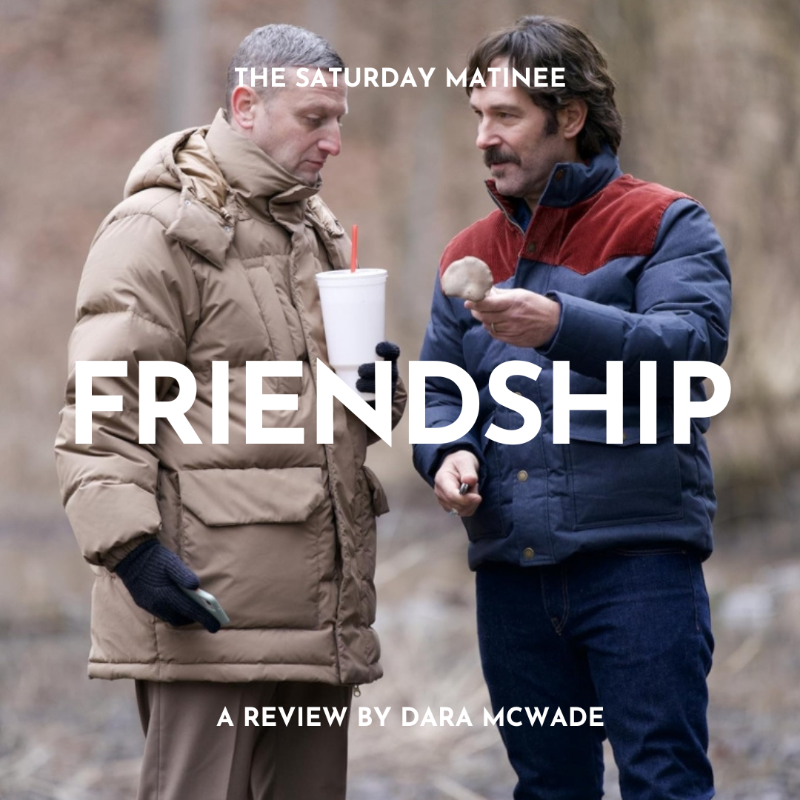
There’s a moment in the new film Friendship, written and directed by Andrew DeYoung and starring the internet’s favourite sketch comedian Tim Robinson, involving a bar of soap that invokes a moment of real pathos amongst the cringe comedy at which the film so excels. But we’ll get to that.
Friendship is much like the experience of friendship, awkward, difficult and ultimately more rewarding the more vulnerable you can be with it. It exists firstly – and perhaps to its own detriment – as an excellent vehicle of a cringe comedy. And it is funny – both Robinson and his co-star Paul Rudd commit entirely and bravely to the bold premise of this movie, using his all too-cool Rudd-ian mannerisms to puncture his star persona. Desperate, rather than cool.
These affectations still charm Robinson’s Craig, a pathetic, out-of-control, possibly narcissistic man-child. Robinson’s persona is one of the great comedic inventions of the decade – his particular notes of loud, loutish presence emblematic of the lost masculinity of an atomised society. His idea of a night out is seeing a new Marvel movie. He spends most nights watching the beautiful family he’s somehow lucked into from an armchair in the living room, playing with his phone. Craig is the person we all fear becoming.
But Friendship might be too funny. Scenes often devolve into farce, stretching the elastic dramatic world loose. But the film doesn’t need to go there to keep us cringing along – it’s compelling enough as a drama. Perhaps this is the point. If it wasn’t all so funny, it would be too real.
Back to the soap scene. Rudd is having a boys night with his friends, and Craig is bungling it. After a particularly bad social slip, flooring Rudd while boxing, Craig picks up a bar of soap. ‘I’ve been a bad boy!’ he says, eating it. The film gives us few clues about Craig’s early life, his childhood, but from this reaction, this immediate way of trying to alleviate a situation where he has done wrong, we can infer a whole world. It’s a comic, cringe beat rooted in a believably horrible insinuation. It’s moments like these – where the comedy meets drama – where Friendship flies.

It’s a big life lesson when things don’t work out like in the fictional world of a book. Books can be escapism, a fantasy, yet still hold an underlying truth within, that we as readers have to figure out. Author turned screenwriter/ director, Don Haugerud Johan, brings this discussion to the forefront of his film 'Dreams.'
Part of the Oslo Stories Trilogy ‘Dreams, Love, Sex’, ‘Dreams’ is a complex, hazy, novel-like film that centres around a teenage girl’s crush on her high school teacher.
The film follows Johanne, our seventeen year old narrator, who is curious, yet self-interested in only her world. A perfect protagonist I suppose. Johanne falls in love for the first time, experiencing an unrequited romance with her teacher. Through this heart ache, she writes down her feelings, wanting to keep it close to her heart. When she shows her famous poet Grandmother, she urges Johanne to publish her writings.
‘Dreams’ borders between realism and fantasy, with Johanne’s Mother, Kristin, and Grandmother bringing in more of the realistic elements, big discussions around interruption of art, and how everyone has different perceptions. Kristin upon first reading Johanne’s book is horrified, threatening to sue the school. Yet upon a closer read, she feels detached from it and joins in on the idea on publishing it. While Johanne is the dreamer, her passages are filled with visuals that fit her literature-style voice overs. A blur type haze, with a large focus on lighting and colour.
Yet, the film almost criticises itself here. How we react to art, how it inspires us and then either distances us or brings us together. The film’s discussion around art and its place in the world and society sometimes was more interesting than Johanne’s own love sick woes, as well as her privilege to simply get something published with a sense of ease.
Dreams, the first of the trilogy to be released here, is a visually beautiful and pointed film, with discussions that are interesting, complex and human. And as its reviewer, it has been fascinating to try and find its truth.
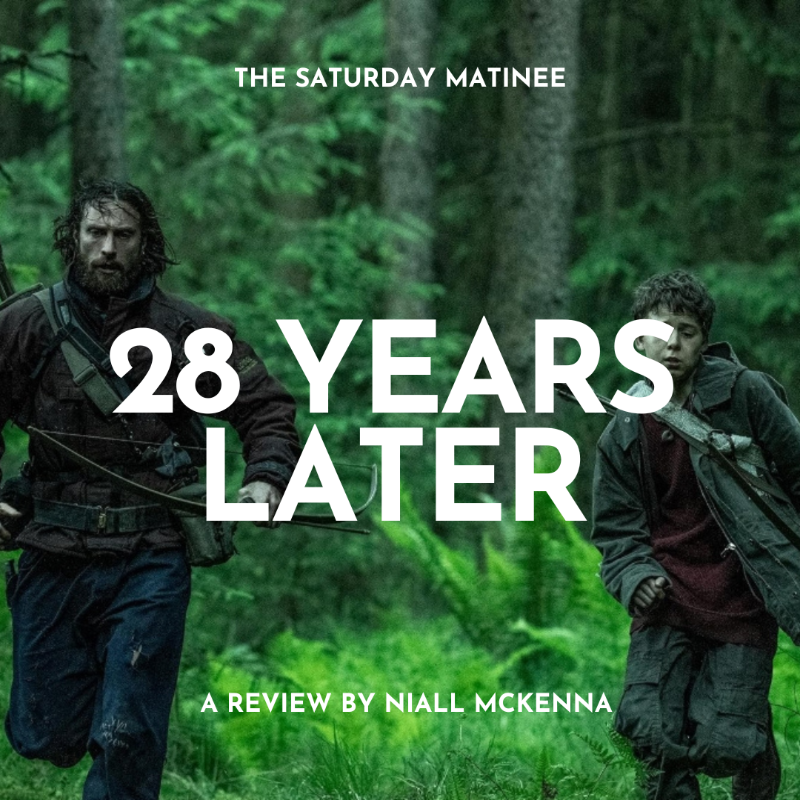
Like the infected Alphas rampaging through it, ‘28 Years Later’ is an altogether different beast to its sequels ‘28 Days Later’, and the other one. It is bold, gruesome, and sometimes bizarre.
There are welcome traces of the original's DNA, but for the most part this is an irreverent reinvention packed with director Danny Boyle’s compassion and verve. This beast has a big heart.
Much of this is owed to newcomer Alfie Williams, who plays 12-year-old Spike. Spike lives with his desperately sick mum Isla (Jodie Comer) and loving but toxically masculine dad Jamie (Aaron Taylor-Johnson) on Holy Island, a haven from infected intermittently protected by a tidal causeway. For all its star power it is Williams who carries this film, a hero of almost mythic quality who must venture out in order to form his own understanding of the world beyond that received from his parents and community.
A lot has happened in our world since Cillian Murphy first walked those empty London streets in 2002, and Boyle is deft and mischievous in how he weaves our contemporary anxieties into the narrative. Any one of us could be Isla in a future where routine checkups become inaccessible, and Comer’s performance slides between lucid acceptance, righteous fury, and utter helplessness, underpinned by the character’s unshakeable love for Spike. Ralph Fiennes seems a hoot, but his character’s soft-spoken sermons on death and loss open a disarming space in the middle of the film to contemplate what it means to live and die in this/our plagued world.
Rest assured this is still an apocalyptic movie, and an absolutely brutal one at that. Chi Lewis-Parry plays the terrifying Samson, an infected Alpha whose signature move had me squirming in my seat. Beneath these violent sequences thrums Young Father’s unrelenting soundtrack, and amidst the disorienting drumbeats and ambient sound there are tracks like Causeway and Remember which are deeply moving.
It’s so refreshing to see a sequel that is utterly its own original, and I can’t wait for the next one. 28 Years Later: The Bone Temple is out, funnily enough, in 28 weeks.

Spoilers ahead.
“You are now embarking on an odyssey of discussion about an actor who keeps the world asking: Nicolas Cage, good or bad?”
This quote from NBC sitcom Community (Season 5,Episode 2) echoed in my mind as I embarked on my own odyssey to the QFT. The last screening of The Surfer lay before me. And I have been tasked with a daunting question to answer: Nicolas Cage: good or bad?
Directed by Ireland’s own Lorcan Finnegan, The Surfer is a psychological thriller that follows a man’s descent into madness. Nicolas Cage plays a nameless character who we only know as “The Surfer.” Post- divorce and struggling to maintain a relationship with his teenage son, The Surfer believes surfing will heal all, bringing his son to surfer where he used to as a teenager, and even buying a house on the cliff. This plan is thwarted by a manosphere influencer and local surfer, Scally (Julian McMahon) and his group “The Bay Boys”
As someone holding an English degree, I can genuinely say that the performance that Nicolas Cage gives in The Surfer is Shakespearean. A tragic hero. An outsider, slowly driven to madness. An escalation of violence as a result. You get to the midpoint of this film and you can’t help but ask: why doesn’t he leave? Simply answered, he can’t. Not just because his car gets stolen, but this is his home. He has slowly sacrificed everything he has over the course of this film: money, his shoes, a priceless family watch. And as reality crumbles around him and he is left barefoot and bleeding in a beach car park, he knows his plight is pathetic. But the genius performance of Cage, The Surfer persists.
At the end of this review, the looming question still stands, “Nicolas Cage: good or bad?” And say what you like, but I would argue that Cage is an amazing actor who especially thrives in weirder roles like The Surfer, Longlegs, even Moonstruck. Leaving the cinema after watching Nic Cage shoving a dead rat into a man’s mouth as he attempts to drown him and screaming at him: “Eat the rat”, I don’t think it is possible to dislike such a stellar performance.

Coming off the back of 2022’s critically acclaimed ‘She Said’, Rebecca Lenkiewicz makes her directorial debut with ‘Hot Milk.'
Adapting the 2016 novel of the same name, ‘Hot Milk’ explores the relationship between Sofia (Emma Mackey) and her mother Rose (Fiona Shaw), delving into themes of trauma, shame and desire as Rose seeks treatment for her debilitating illness.
Sofia acts as Rose’s primary caregiver, both have travelled from London to Spain to seek a cure for Rose’s illness under a Dr Gomez, who offers an alternative medical approach. One such approach of Dr Gomez’s is to find healing through the unloading of past traumas that are stored inside the body. Rose displays many tenets of an Irish mother: (and I mean this with love) pass-remarkable, overbearing and most notably, blunt. Sofia took an extended leave from her education to care for her mother, however Rose venomously points out “you always had a hard time finishing things.”
Wandering around the sea, away from her mother, Sofia meets Ingrid (Vicky Krieps) who rides up to her on horseback as though she’s Sofia’s saviour. As their relationship develops, they become more intimate and romantically involved.
While Rose receives ongoing “treatment”, her mental state worsens as Dr. Gomez attempts to dig deeper into trauma’s of Roses’ past that she is not willing to divulge, furthering the burden put on Sofia. All the while, Ingrid is dumping her own traumas onto Sofia, pushing her to boiling point. It is no mistake that the Sofia character is a lapsed Anthropology student. While she pursues Ingrid as a means of getting away from her mother, she finds herself in a similar situation - another person from a different part of the world with her own issues, telling us that human pain, suffering and shame is universal.
‘Hot Milk’ presents interesting themes. However, when played out on screen, they are mostly uninteresting. I couldn’t find myself caring all that much for Sofia, watching her quietly mope around until she would become overwhelmed and explode with rage. The quiet, slow nature of the movie relies on its dialogue to present its ideas, but lines often land pretty flat.
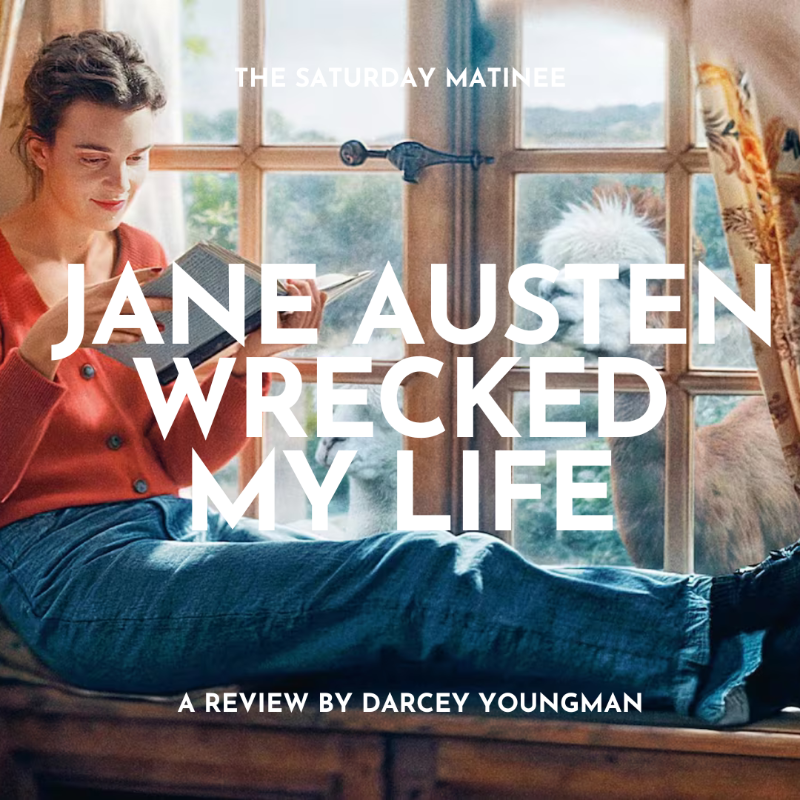
When I heard the title and premise of this film, I felt a duty of sorts to go out to the QFT and watch. Afterall, my name is Darcey Elizabeth (My mum’s a huge fan) However, I was pleasantly surprised by an easy-going theatre experience for all who love romance and literature.
We follow Agenes, an aspiring writer who works in Paris, at the famous Shakespeare and Company bookshop. Agenes is the perfect Austenian protagonist. Clumsy, passionate, trying to escape the world that she is in, and ultimately single. She gets accepted to the Jane Austen writing residency hosted by Austen’s distant ancestors including another strikingly Austenian character, the brooding, Oliver.
What ensues is situational humour, albeit rather cliche in some ways and predictable. The film isn’t inventing the wheel. It relies on tropes, and others before it. Yet what makes it different is the interesting discussion around writing. Agnes is experiencing writer’s block due to losing her parents in an accident. As we turn to the third act, we watch Agnes confront her past through writing, through place and through acknowledgment. It’s a satisfying denouement. It becomes less about the importance of romance in her life, and more about reigniting with her passion, and her love for writing. I have to say that I craved more of this, more engagement with her writing journey, rather than the cliche moments. It felt almost like something Jane Austen would write herself, if she existed within the modern age.
The title I find misleading. Jane Austen in Agnes’ eyes inspires her, and brings her to the moment of confrontation with her writer’s block. Perhaps I am biased to this however, as I feel that my namesake has definitely informed my own journey into becoming a writer. How ironic! A girl called Darcey Elizabeth becomes a writer.
Jane Austen Wrecked my life, or the original French title ‘Jane Austen a gâché ma vie’, is a fun, light-hearted rom-com with an underbelly of creativity. I felt a connection with Agnes and her aspiration towards her writing, and of course that she appreciates the power of Jane Austen too.
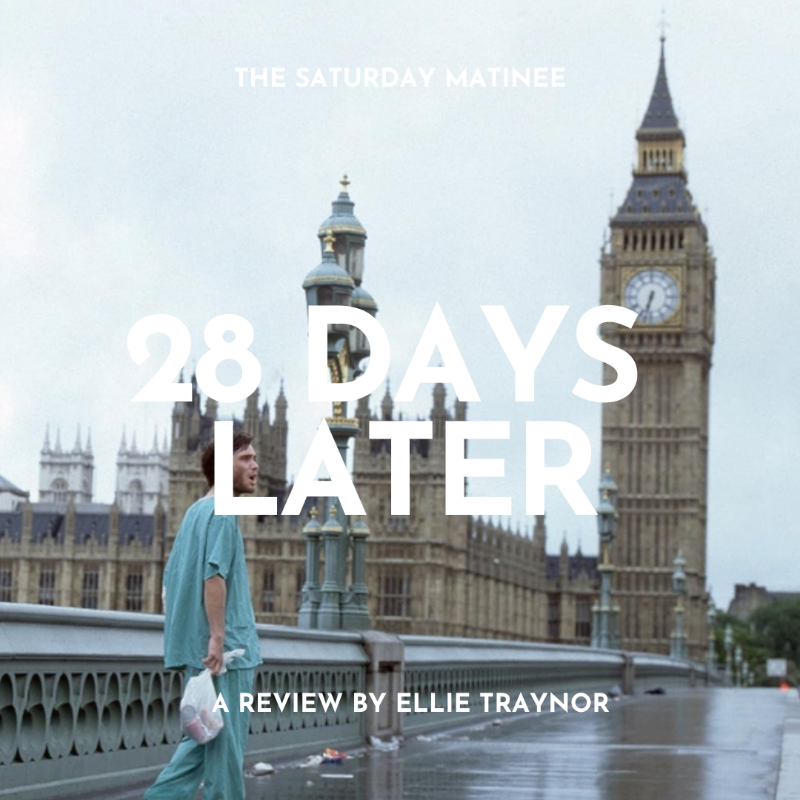
The film follows Jim, (Cillian Murphy), as he is forced to come to terms with the fact that the world ended while he was in a month-long coma.
I think what sets 28 Days Later apart from the other films in the apocalypse genre is Boyle’s firm stance that this is not a zombie film. Whilst playing with the traditional tropes of the subgenre, Boyle and writer Alex Garland instead focus their film on a viral “rage” infection instead of the undead. We see this in the intense physicality of the infected. Unlike HBO darling The Last of Us, where the infected become almost alien-like as their bodies are mutilated with cordyceps, Boyle keeps the infected of his film sickeningly human. The transformation is entirely internal which keeps the horror focus not on grotesque looks but instead the overwhelming power of the infected.
As an example of this, we can turn to the casting. Boyle insisted on speed. Not just the speed at which the virus takes over, but the physical speed it induces in the victim, therefore hiring retired athletes was the best option to achieve this effect. I am a wuss at the best of times, but nothing puts the fear of God in me more than watching Jim and Selena being chased up a flight of stairs by a hoard of infected that fly up the stairwell with ease. Or watching them thunder down an abandoned road tunnel. Or how they skillfully scaled makeshift barricades. This attention to detail heightens the already barbaric depiction of the infected, making this film a delightful nightmare to watch
28 Days Later and the focus on the human condition post apocalypse makes for a terrifying watch. And I have no doubt that the newest film in the series, 28 Years Later, will further expand on this horrifying story.
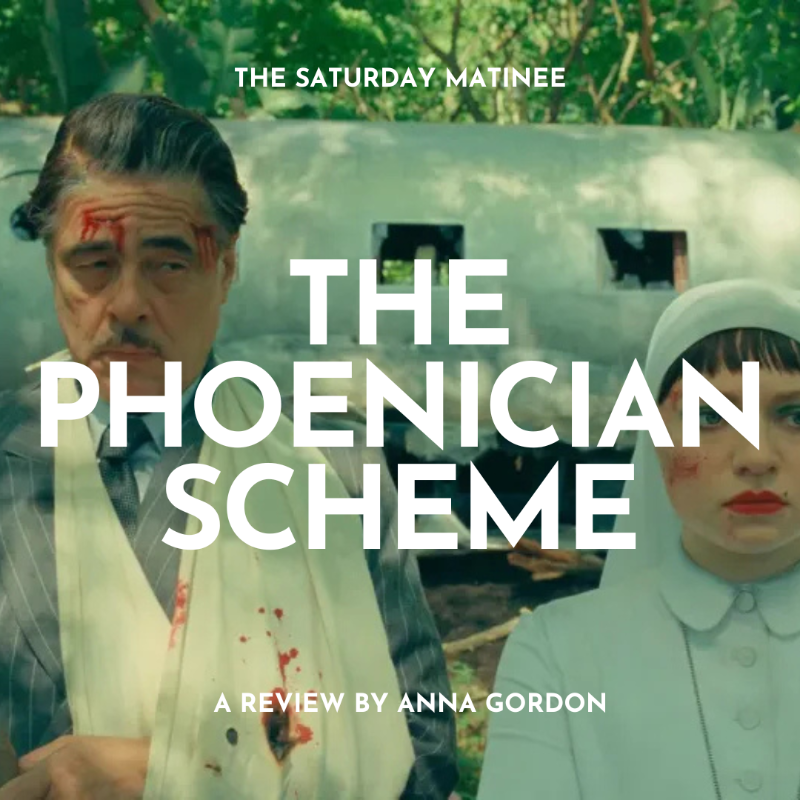
Bouncing back from 2023’s alienating Asteroid City, Wes Anderson returns with The Phoenician Scheme, chronicling wealthy businessman Zsa-Zsa Korda and his nun daughter Liesl’s schematics in trying to close “The Gap” – or the funding deficit of his public works projects. After officially appointing Liesl the heir to his business, the pair (accompanied by Michael Cera’s Bjorn, who is a standout performer in the film) undertake an odyssey of persuasion, moving between various business partners, investors, and family members to convince them to help close “The Gap”.
Anderson masterfully wields his talent for sharp black comedy while balancing the gravitas required for the themes he explores. A particularly memorable sequence sees Bryan Cranston and Tom Hanks play basketball in short-shorts against Zsa-Zsa and Riz Ahmed’s Prince Farouk. Underneath the comedic aspects of the film, however, he is teasing out themes of family, legacy, and religion. Familial estrangement and reconciliation are broached through the characters of Zsa-Zsa and Liesl, which is a particularly heart-wrenching aspect of the narrative. There is also a partiality to violence that surprises; the opening scene includes a man getting blown in half, framed as a comedic incident.
However, Anderson’s trademark symmetrical framing and meticulously detailed set design, full of vibrancy and character, ultimately erects a thin wall between the audience and the story. While Anderson is more plot-focused in The Phoenician Scheme than in some of his other more recent works, there is still a struggle for connection. Characters are left underdeveloped, especially important players like Liesl, who we don’t quite get acquainted with past her relationship with her faith and her father.
But there is catharsis in where Zsa-Zsa and Liesl’s arcs take them, and the film beams with an unsuspected optimism. Anderson’s resolution reminds us why he’s in this business in the first place: his convoluted plots say something so simplistically true about human nature, and in a way that is so colourful and beautiful one can't help but be drawn in completely.
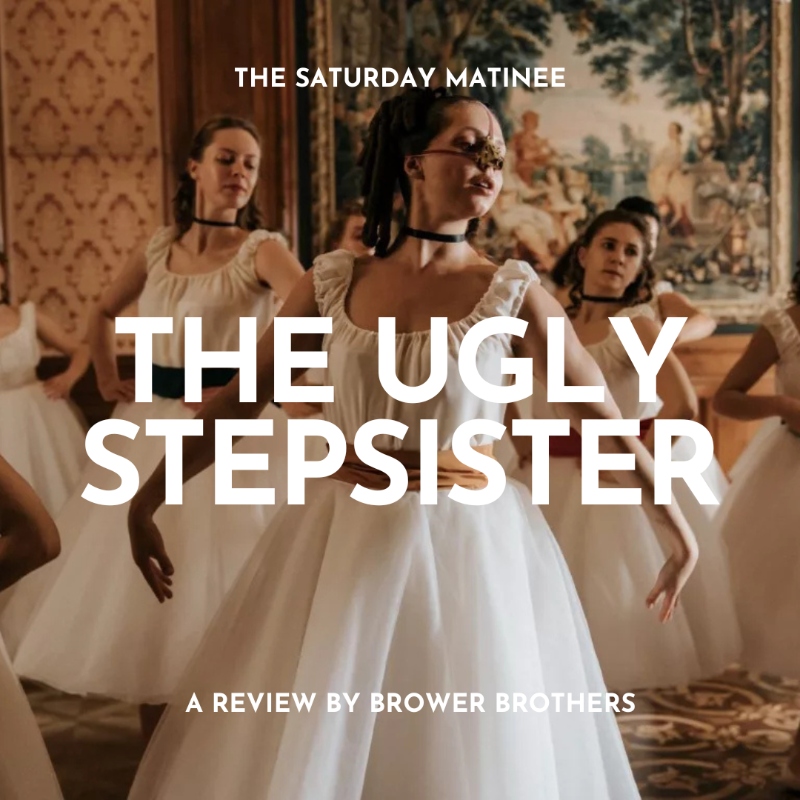
A fairy tale with a grim twist, 2025’s ‘The Ugly Stepsister’ tells the story we all know from a different point of view.
Written and directed by Norwegian filmmaker Emilie Blichfeldt in her debut tenure running the show, the film is a gruesome depiction of a society only recently passed. Filled to the brim with 17th Century surgical procedures, archaic gender roles, and a show-stealing tapeworm, this is a body-horror for the story books, and one that rejects the notion of a happily ever after.
Once Upon a Time, in the Norwegian countryside, a marriage brings together two fractured families. The beginning follows the same story as the traditional tale of Cinderella, it’s only when the news that the Prince will be hosting a gala to find a bride, that it takes a turn. Rebekka, the mother, sees her daughters as less-than-beautiful, especially with Agnes (Cinderella) walking amongst them, she decides to grab the steering wheel from God and take matters into her own hands. She will design her daughter, Alvira, and change her appearance into one the Prince will surely fall in love with.
Taking constant trips to the surgeon, fixing her nose, eyelashes, breasts, the mother alters her daughter equally physically and mentally, chauffeuring her to what could only be described as a sort of obedience class to learn how to act like a proper lady. The surgical scars and rhinoplasty brace set Alvira apart from the other girls, isolating her, and making her feel uglier than ever. Alvira grows addicted to the idea of beauty, willingly swallowing a tapeworm, she begins to lose weight, and with it the lining of her stomach and tufts of her hair.
There is a curse with every blessing, and by the time the ball comes around Alvira is a completely different person. And, still, that person is unable to find what she is looking for.
If you miss the fairytales from your youth, and the timeless charm of provincial romance, this toe-cutting drama is the movie for you. Easily the best live-action remake of a fairytale that has come out.
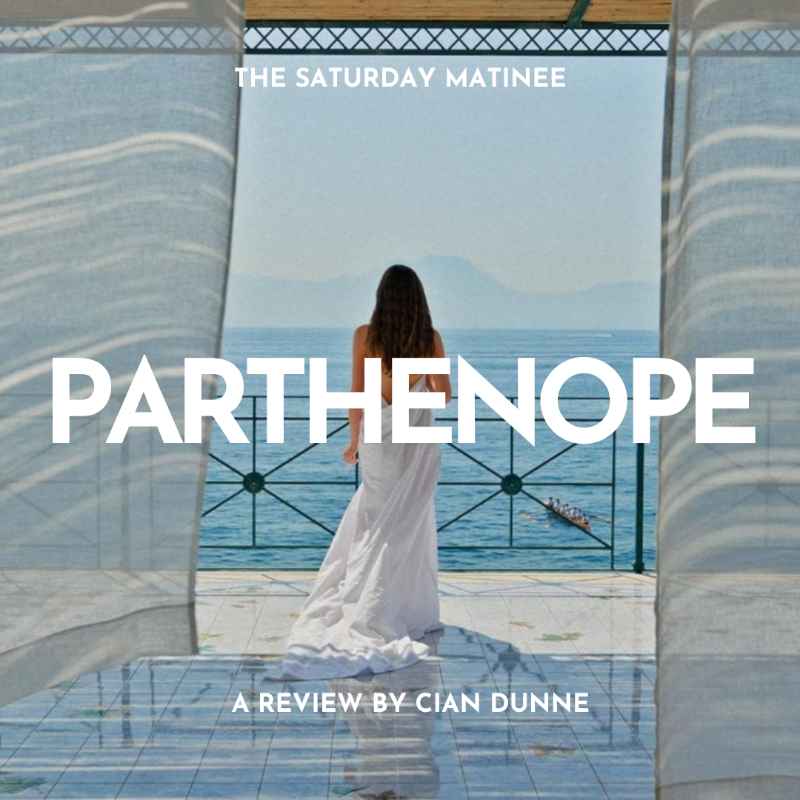
At various points in Paulo Sorrentino’s latest film, the eponymous Parthenope is encouraged to let herself go. What it would mean for her to do so is left, in Sorrentino fashion, ambiguously unexplained.
This challenge is both complimented and confused by one of the film’s persisting visual motifs– of characters falling backwards– off a chair, into a pool, or, in the tragic event which anchors the film’s deep-seated melancholy, off a cliff into the glistering Caprese sea. Picture Nolan’s ‘kick’ in 'Inception'– therein a means for the characters to wake themselves out of an immersive dream. The audience finds themselves similarly drenched in Sorrentino’s impossibly saturated portraits of Naples. Yet, in his filmic language, rather than a means to an end, the interest is in the lingering aftermath of the fall. The film, a journey of emerging out of the submersion. The focus, on the droplets that slide down Parthenope’s skin as she rises, Venus-like, from the ocean shoals.
The film is ostensibly about Parthenope’s frustrated desire to define herself, and be seen by others, beyond the captivating impressions of her unquestionable, unavoidable beauty. Over the film’s gratuitous runtime, she succeeds. Yet, the thematic concern is less to do with a fading beauty than with the waning memories of a once fragrant youth. The clarity of these memories grows faint, their conviction of limitless potential falls away.
As she matures, Parthenope’s well of suffering is steeped a level beneath its self-evidence. Her internal sadness, countered by an outward obduracy, manifests in a yearning not for the reclamation of those lost memories, but for a means to grasp some understanding of their significance. Amidst the extent of all that is drowned, the little which survives takes on a near-sacred resonance of meaning as it rises to the surface.
Emerging from the theatre, that which lingers most vividly in memory are Sorrentino’s beautifully bright vistas. Naples bleeds from the screen, drips with brilliant blue. At some point, I let myself go– let fall into Sorrentino’s screen of dreamlike sheen. Towards a beauty that seeps; weeps.
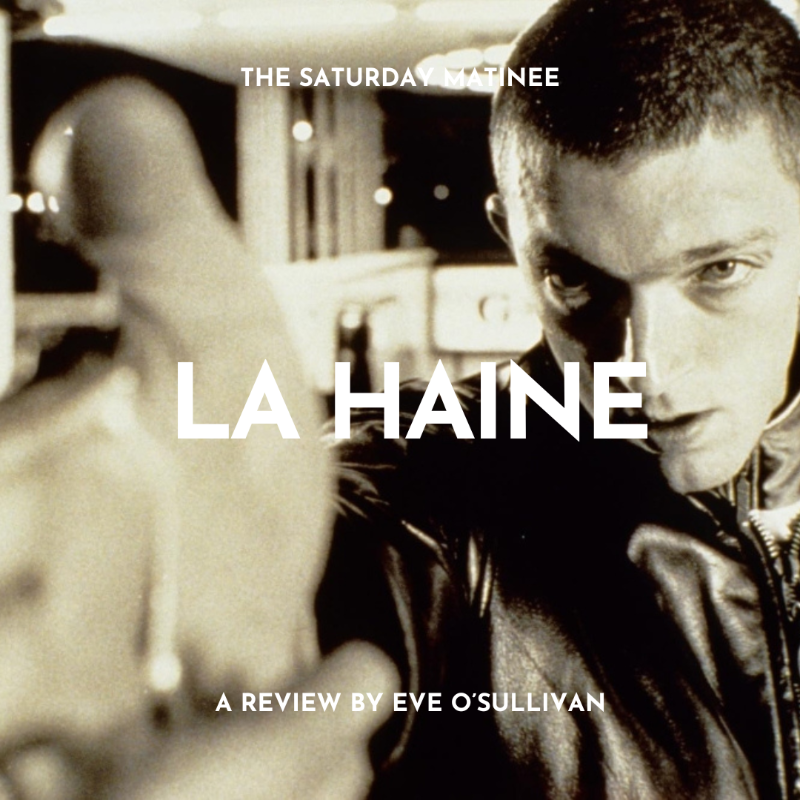
We open on a shot of Saïd grimly staring into the camera as he watches a line of armed police officers outside his home, a banlieue on the outskirts of Pairs. The neighbourhood wakes up to the news of a local boy, Adbel’s death at the hands of police brutality.
La Haine (1995), directed by Mathieu Kassovitz, follows 24 hours in the life of three friends: Vinz, Hubert, and Saïd. Vinz is immersed in a plot to kill a police officer with a gun he stole, Hubert is a little more skeptical and Saïd acts as the mediator. The clock ticks mercilessly on as Vinz becomes increasingly restless, leaving the viewer with no choice but to anticipate their inevitable downfall.
La Haine is a modern classic, celebrated for it’s cinematography and themes. Being familiar with the film, I found myself more struck by this rewatch than I had been previously.
The films exploration of subjects are still extremely relevant today. It is disturbing to think that thirty years onward issues such as police violence, racial prejudice and poverty are still firmly rooted in the forefront of societal consciousness- it is still a bleak reality. La Haine leaves us with many questions- would Abdel, Saïd, Hubert and Vinz be targeted by police if they were not part of ethnic minority communities? Would another suburban neighbourhood be subjected to this level of police surveillance if it were middle-class? How do these systematic issues contribute to the on-going cycle of violence?
La Haine ends on a tragic note, and we are left once again with a shot of Saïd staring grimly into the camera. As this echoes its opening, we are reminded of the ongoing cycle of violence the boys have been born into. We do not know what becomes of Saïd or if he ever breaks it; but we do know that the treatment of him and his friends may be a catalyst for more potential unrest. Ultimately, La Haine still resonates with a contemporary audience- firmly establishing itself as both a complex social commentary and a piece of outstanding cinema.

It’s been three years since the kinetic and influential genre-bending film, ‘Everything Everywhere All at Once’ hit our screens, and since a surge of films alike have appeared, such as ‘Companion’. Now ‘Sinners’ joins the fray, in its own visceral and rollicking way.
Director Ryan Coogler has created a dizzying blend of historical drama, broad comedy, horror and even some metaphysical transcendence for good measure. The most impressive thing is how he is able to juggle these wildly fluctuating tones with his trademark interrogation of themes of cultural appropriation, oppression and resistance.
Fans of Michael B Jordan rejoice - or beware - as he plays dual roles as a set of twins (brilliantly called Smoke and Stack) who roll into a Mississippi town after involvement with Al Capone’s crime outfit in Chicago.
Oozing charisma and danger in equal measures, the brothers organise a juke in an abandoned Southern barn. What begins as a riotous time takes a turn when creatures of the night take a scent of the revelry.
What follows is a lurching plunge into chaos that, whilst perhaps a tad conventional for horror aficionados, offsets the slow-burn of the first half of the film brilliantly. Though the second half is a little by-the-numbers, the ‘wishbone’ scene in the middle of the film that connects both sides of the film is worth the price of admission alone. A magic mix of time-hopping musical genres and eras, it’s a marvellous sequence that Ryan Coogler along with composer Ludwig Goransson, deserve their flowers for. It might just be the most thrilling use of music since the docking scene in Interstellar. Suck it, Spidermen.
Oh, and unlike all the other disclaimers about staying until the end of the film, you’ll really want to stay for the mid-credits scene as it contains a fair chunk of the end plot and character arcs.
So if genre-bending and demonic versions of “Rocky Road to Dublin” sound like your thing, skip the priest and run for ‘Sinners.’
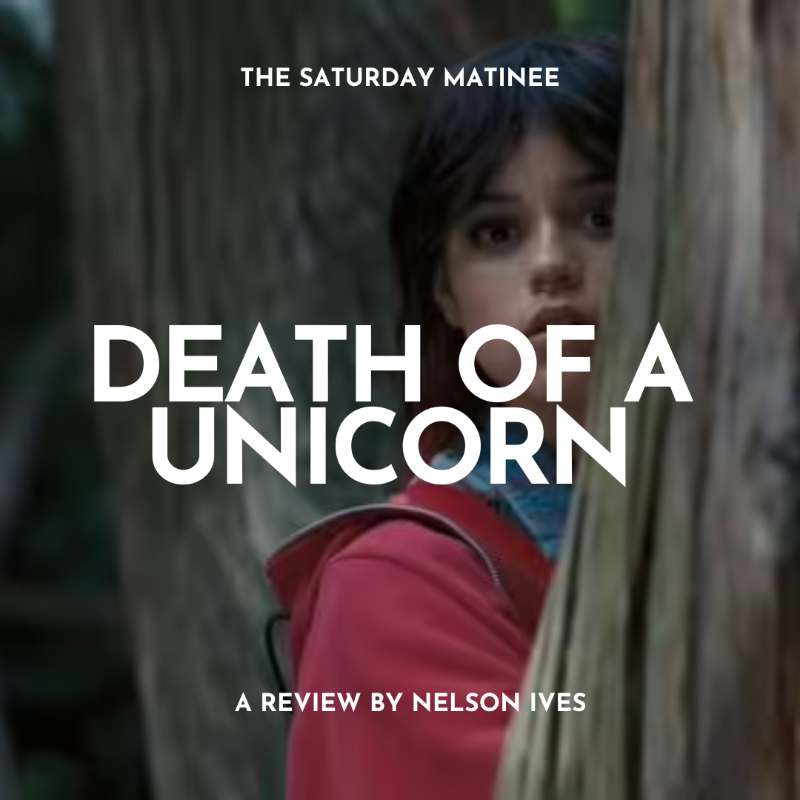
‘Death of a Unicorn’ directed by Alex Scharfman, is a great concept that unfortunately doesn’t even swing when it misses.
Genre wise it sits in the “horror comedy” section, however it doesn’t really seem to understand how to be that as well. Planting seeds of both, horror and comedy, it never lets them grow to be fruitful. And the bits that did make me giggle had unfortunately all been given to the world in the trailer.
As a general movie, it’s stylistic voice is barely existent, other than being set in the beautiful location of “Vague Canada” (they really hit you over the head with a lot of maple leaf imagery). As well as it’s commentary on class and the healthcare system being incredibly surface level.
I think the issues with Death of a Unicorn all boil down to a pretty boring script for an exciting and unique concept. The cast really do the best with what they’re given (particularly Will Poulter as Shep). And if I dwell on it further, here are interesting seeds here buried within, such as the unicorn horn potentially making you a genius if you snort it (though if this was a joke it wasn’t clear and if it was serious the characters certainly didn’t act like it) and engaging folkloric unicorn roots in modern times.
Overall an unfortunately skippable movie, just watch the Menu or Triangle of Sadness, or Opus instead (they all deal pretty much with the same stuff!
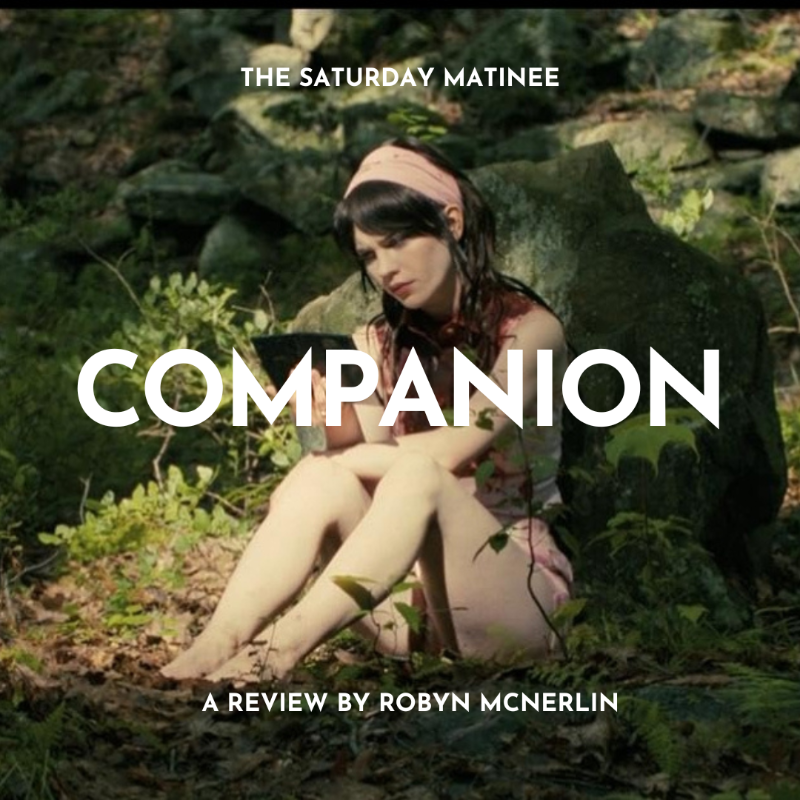
Drew Hancock’s sci-fi thriller, ‘Companion’ explores the complexities and nuances between artificial intelligence and human relationships. From its release, Companion boasts a 94% rating on rotten tomatoes, and considering the current developments in AI technology, we can see why audiences found this film particularly topical.
One could accuse Hancock and his leading actors, Sophie Thatcher as Iris and Jack Quaid as Josh, of misdirecting the viewer. With a bubble-gum pink title scene, and a classic rom-con meet cute, Iris promises to audience of a violent ending comes seemingly unprovoked, foreshadowing the uncertainty of AI.
Viewers are then introduced to a text-book movie friend group: the affectionate gay couple, the intimidating girl-best friend, and her seemingly shady, older, (and married) boyfriend, who has ‘not so clean hands.’ 20 minutes in; something seems amiss. The score by Hrishikesh Hirway along with striking visual effects and cinematography by Jamison Goei and Eli Born, invites a tension we can’t quite put our finger on. After a violent encounter between Iris and Sergey, the group’s true intentions, along with Iris’ ‘identity’ are revealed. After a series of betrayals, twists, and fight scenes, we watch as Iris morphs from companion bot, into her own independent being. Struggling to fight for her right to ‘live’, Iris holds onto the sentience she was given. Ultimately, Iris is freed from her controlling boyfriend (remember that promise of a violent ending…) and has her own poetic drive off into the sunset, with the return of the bubble-gum pink title slate of course.
Ultimately, Hancock explores the human dependency on AI, and the ways in which we allow it to dictate/control our lives on a day-to-day basis. Similarly, he considers the negative (or deadly) effects of this dependency influence our familial, romantic and platonic relationships. If you haven’t already- give companion a watch! Love it or hate it, you cannot deny the presence of AI creeping into all aspects of modern-day life.

While Brazil’s first ever Oscar-winning film ‘I’m Still Here’ may lean into its story’s quiet strength to get The Academy drooling, to say that strength is ever contrived would be a reach.
A Huey strafes over Eunice Paiva as she bobs in the sea; a peek at Fernanda Torres’ flawless performance, even a light swim made pensive. The beach behind her is busy with volleyball, a soon-to-be-adopted stray dog yapping, the young Paiva sisters using Coca Cola as tanning oil.
This film wants a setting you’re quickly jealous you don’t belong to. Rio in the 70s is bustling and cool. Grainy film captures beautiful people in beautiful clothes, smoking joints in sleek cars. Here, we're headbutted by the military dictatorship harassing Vera and her friends at a checkpoint. Even in the good times, the regime waits in the underpass and still hangs over Brazil long after the film's events (Rubens Paiva was only declared a victim of state murder on 23rd January, the same day the film's Oscar nominations were announced.)
The precious moments of a family chatting frenetically during dinner and dancing to samba and Bossa nova records are underpinned by this threat, which come to fruition when Rubens, father, civil engineer, and political opponent, is taken away for a “deposition” and does not return.
After the suspense of Eunice’s search for truth in the immediate aftermath of this abduction, the time shifts to the 90s and beyond, which is slightly jarring, but necessary to telling the full story. Her Alzheimer’s diagnosis after years of preserving her husband’s memory feels too poetic for a ‘true story’, but without showing this there’s no resolution. Just a family uprooted on camera.
Photographs and Super 8 footage tell a good chunk of the story and reflect on what a single family’s resistance looks like: remembering in the face of an altered history, a doctored truth. They will take from you, anyone, as much as they want, but ‘I’m Still Here’ telling us not to just let them. Remember why you carry on; Remember.
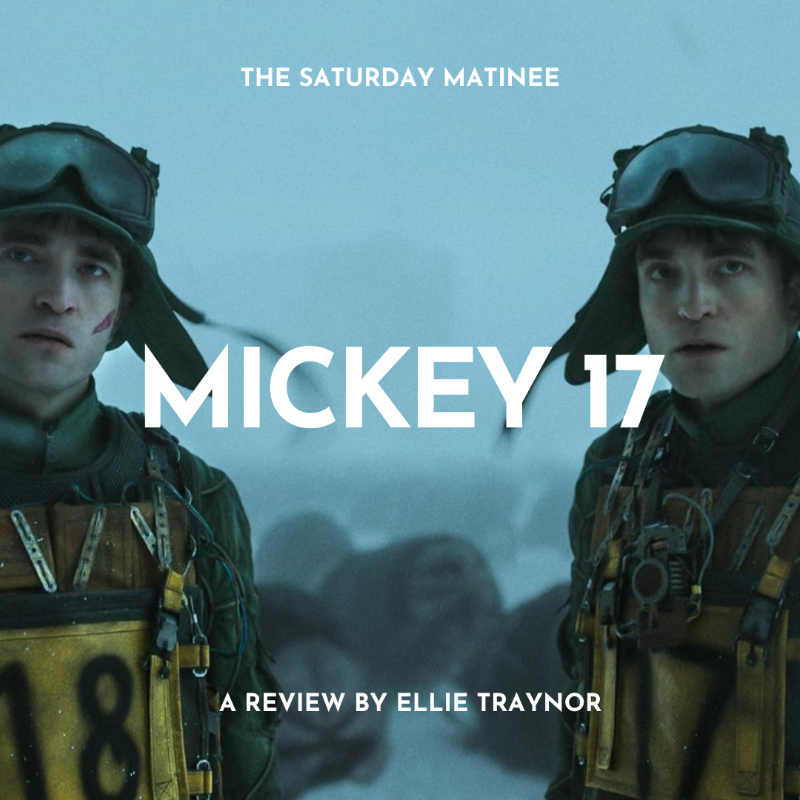
This review contains spoilers.
Bong Joon Ho skillfully blends dark comedy, with a thinly veiled social criticism of an abusive capitalist system making Mickey 17 one of the most memorable science fiction films of recent memory.
An adaptation of Edward Ashton’s 2022 Science Fiction novel, Mickey 7, we follow Mickey Barnes ( in his current iteration as Mickey 17) and his life cycle as an ‘expendable’. A voluntary position aboard a spaceship with the express purpose of colonising other planets for human habitation. The expendable’s DNA is harvested in order to print clones. As many die, they just keep printing.
It’s almost too obvious to point out how good Robert Pattinson is, occupying the role of lead and supporting actor. The changes he makes between Mickey 17 and Mickey 18 are masterful in characterising the two expendables. Mickey 17 is pathetic in his presentation, smiling as his body shuts down in the name of “scientific progress”. Mickey 18 is gruff, hardened by the system. The doubling of the main character is used brilliantly in order to reflect the two states of being in an abusive capitalist system. One who thanks the oppressor for a poisoned meal. And the other that tries to shoot him in the head.
The number of parallels between the world of Mickey 17 and our own are frightening. The earth slowly becomes uninhabitable and the natural solution seems to be boarding a spaceship with the goal of space colonisation. A ship, captained by a failed politician with a number of obsessive supporters toting red hats. The plans to massacre the native population of a planet.
But despite all of the pain and suffering that this film has to offer, Bong Joon Ho decides to leave us with a message of hope. The human printer is destroyed with a definite end to the expendable programme. Just before the credits roll, we are presented with the titled card once again. And the letters shift from Mickey 17, to solidifying him as a singularity. As a person. As Mickey Barnes.
A film that forces you to reckon with our own mortality and relationship with our body’s function as a cog in the bigger capitalist machine, and yet bravely asks:
But like, would you sleep with your clone?
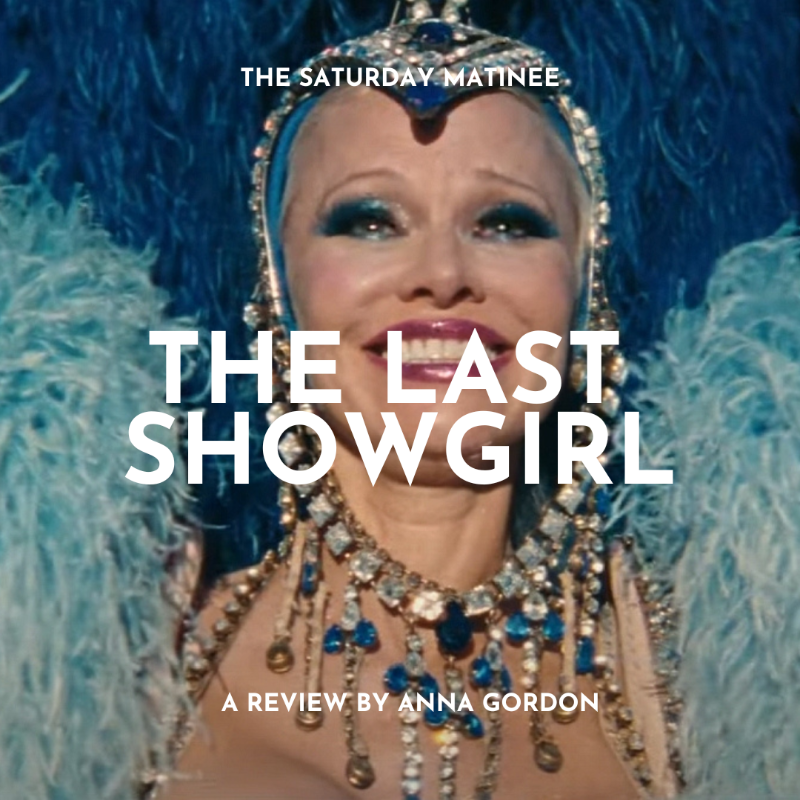
Gia Coppola’s sequined rumination on aging, motherhood, and nostalgia simmers with lost potential. Vegas’ dreamy allure is shattered through the eyes of Pamela Anderson’s Shelly – an aged showgirl, who has sacrificed everything to continue dancing, preparing for her last show. Anderson brings every ounce of dimension to Shelly from a script that gives her little.
Gersten’s screenplay often comes across heavy-handed in its handling of theme. Characters fumble through blatant expository dialogue, and our hands are held through every conversation. “Times have changed”, claims Brenda Song’s Mary-Anne, as Shelly laments her lost past as the most desired showgirl.
Arguably the most interesting relationship in the film is that of Shelly and her estranged daughter Hannah (played by a very obviously not-twenty-two Billie Lourd). This relationship falls short, however, due to Hannah’s lack of depth as a character. Throughout, characters come to silent understandings between one another after difficult conversations that were not earned onscreen. Hannah and Shelly’s relationship falls victim to this, as does Shelly’s relationship with her fellow showgirls. The narrative is a record skipping, hoping we didn’t notice it missed a few bars.
Coppola’s camera meanders behind Shelly as she observes the faded signage of Vegas, the bright city lights; as she dances on the side of the road alone. She purposely withholds depicting the show itself throughout, and when she does, Coppola plays with the subjectivity of the film in a way that is vaguely suggestive of Black Swan (2010), an angle that may have injected something more electric into the script and Shelly herself.
Despite its flaws, Coppola’s film is beautiful. She employs handheld camerawork, shallow focus, and the grain of 16mm film to create a hazy texture which results in dream-like sequences that push too close to our characters' faces, claustrophobic and intimate. But these techniques, the scintillating costumes, even a particularly stirring dance break from Jamie Lee Curtis to Total Eclipse of the Heart, cannot save the film from failing to uncover depth beneath the sparkle.
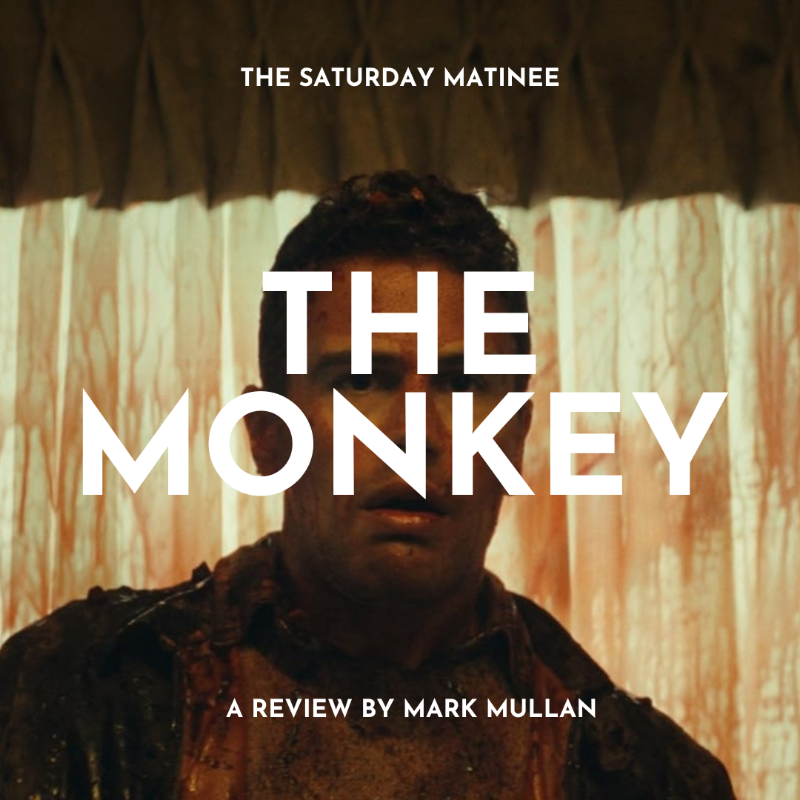
When life gives you death, dance in the lemon rain?
‘The Monkey’ is possibly the most absurd take on the theme, death as the celebration of life, that I’ve ever seen, but it’s a rare day that I walk out of the cinema at 11.30AM with a skip and a smile, and that’s exactly what happened.
In The Monkey’s 90-minute run-time, anticipate entrails and decapitations, countless laugh out loud moments alongside sincere emotional resonance, working within the story’s secondary themes of intergenerational trauma and family dynamics.
To the films discredit, the opening half hour is overtold backstory of how twin brothers Hal and Bill’s absent father cursed them with a demonic death dealing Monkey; and how they threw it down a well. The backstory drags it arse along the carpet and could’ve done with being cut in half. There’s also a difficulty with young Bill who’s something of a straw-dog character and the first of a few caricatures we meet in the film.
Putting those small negatives to the side however, once we get into the film’s core, it’s a wild ride with a sensitive side, as aforementioned Monkey returns to haunt the estranged twins as adults. The Monkey’s got timing as well, re-entering Hal’s life on his son Petey’s birthday, the one day of the year father and son should spend together.
With Hal’s competing desires of defeating the Monkey and keeping his son alive, the story has a real engine to it. Driven in no small part by phenomenal performances from Theo James as both adult twins, Colin O’Brien as Petey and a nice turn from Elijah Wood; the film is an opus of death. Think final destination with high production value and a Jolly Chimp.
It’s not for everyone but the core of the movie is most certainly a celebration of life, and a cautionary tale about being too scared of death to live-out-loud. I for one plan to welcome any demonic monkey toys I meet with open arms; in fact, I’m bidding for one on eBay right now…
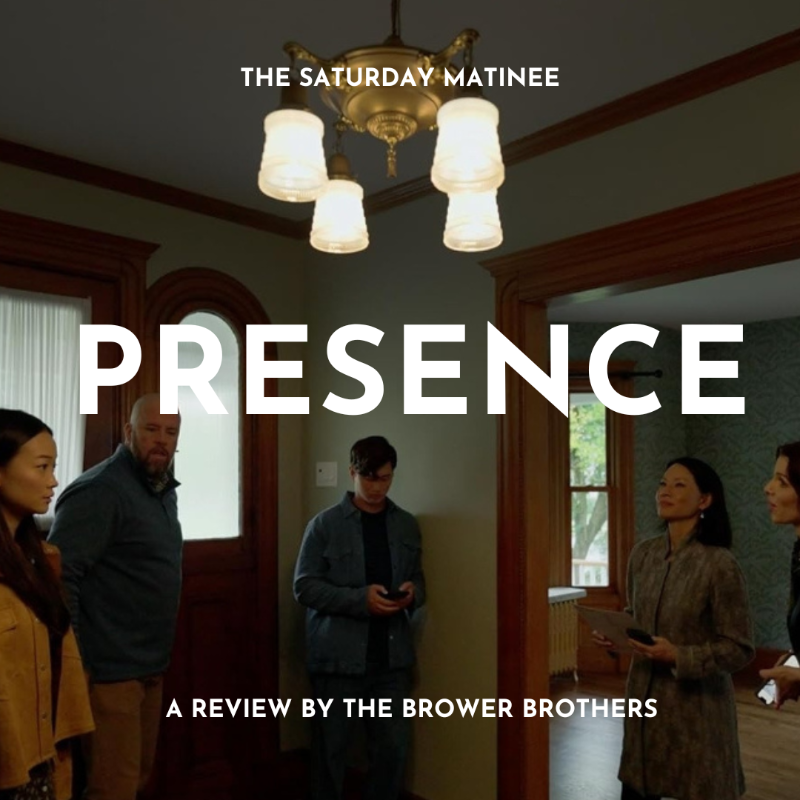
In a recent trend of films looking to re-invent the theatrical wheel, audiences have been encouraged to consider things from new and otherwise under-discussed points of view.
In order for these perspectives to be told, the writers and directors had to find new ways to convey information and allow the audience to put the pieces together as best they can. Due to their efforts, films, such as 2024’s ‘Sasquatch Sunset’ and ‘In A Violent Nature’ though imperfect, have been charming, entertaining and memorable. Steven Soderbergh’s Presence however, lacks this ingenuity, and instead crams pointless and boring information down the audience’s throat until they want to vomit, breaking every promise a movie could make.
With a sloppy run-time of 88 minutes, the film’s only redeeming quality is its respect for your afternoon. Presence, advertised as a horror movie that “tells the story from the ghost’s point of view” follows an incredibly unlikable, upper-middle class family in ambiguous American suburbia. Throughout the film, which has abandoned nuance, allegory and horror entirely, the audience forgets about the paranormal element of the story, instead following the tedious drab of a heavy-handed anti-drug campaign, intermingled with unrealistic and ultimately irrelevant dialogue and family interaction.
Though no performances are worthy of praise, the only actor capable of creating any sympathy is Chris Sullivan, who plays the husband of a daydreaming Lucy Liu, and the father of the protagonist. But, what little good he is able to bring to the story is overshadowed by the hyper sexualisation of teenage characters and a confusing C-Plot relating to he and his wife’s confusing marital arrangement, which quite literally ends unresolved.
With an eye-rolling twist ending to solidify the hilarity of this failure, the movie was without the presence of anything worth watching. With a whopping two scenes depicting anything ghostly, horror fans, and the rest of us, should save their money for something worth watching.
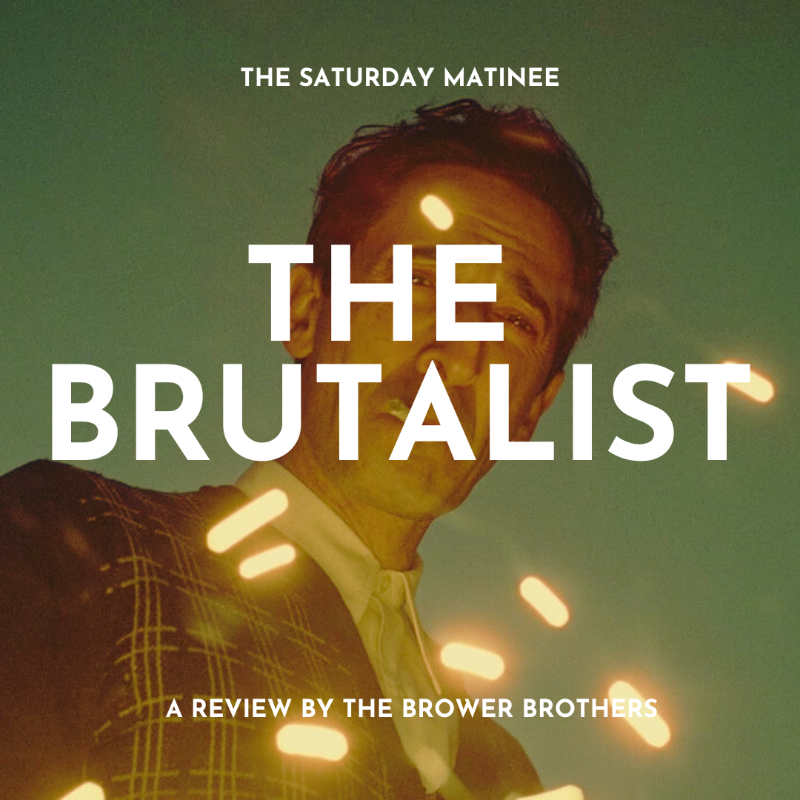
If nothing else, Brady Corbet’s The Brutalist is an exhibit in cinematic ambition. Architectural enthusiasts will enjoy the film’s focus on construction both physically and metaphorically, and the history of 20th century buildings. The rest of us, however, will be overwhelmed with the phenomenal emotional performances by Brody, Jones and Pearce, who have each respectively earned Academy Award nominations for their roles.
The Brutalist is a double feature, masquerading as a single film. Boasting a nearly four-hour run time, with a fifteen-minute intermission, patrons will most definitely get their money’s worth when they come to the theatre. Adrien Brody’s Laszlo Toth is the quintessential father of brutalist architecture. Rough, monochromatic and honest, Toth embodies the characteristics of this utilitarian style, as does the film itself. Like the architecture, The Brutalist stands out amongst its creative peers, seemingly doing everything it can to bend the rules of traditional filmmaking, simply to see how audiences will respond.
With a budget of only $9.7 million, this is a cinematic marvel, proving that you don’t need $200 million to make an Oscar-worthy movie, especially considering that it is nearly twice as long as any given blockbuster.
Over the course of its tremendous run-time, The Brutalist wastes no time dissecting the American Dream. Arriving on a boat to Ellis Island, Laszlo’s journey begins with a greeting from the Statue of Liberty herself. With promises of a better tomorrow, Toth cries tears of joy. He had made it. Though undoubtedly better than the horrors of the concentration camp he found himself in just months prior, Laszlo discovers a myriad of new, unexpected challenges in the land of opportunity. Faced with xenophobia, antisemitism, classism, poverty and drug-abuse, Laszlo begins to feel the monkey paw grasping his shoulder.
By the end of the experience, one leaves the theatre knowing more about Laszlo Toth than they do about themselves. This is especially impressive considering that the film is not a biopic but a complete and beautiful work of fiction.

With the academy award nominations being released just over a week ago, I couldn’t help but notice some big names missing from the line up. Despite having two major releases this year (Queer and the erotic thriller Challengers) beloved director Luca Guadagnino was snubbed in all major categories. To deal with this injustice, I have decided to revisit one of my favourite films of last year, Queer (2024).
Based on the William S. Burroughs’ novella of the same name, Queer follows William Lee (Daniel Craig) and his new found fascination with a younger man (Drew Starkey). An enchanting concoction of the romantic and the surreal, we follow these men as their lives intertwine, navigating their sexuality in bohemian 1950’s Mexico.
Daniel Craig serves us a career defining performance in the role of Lee, skillfully balancing all of the complexities of such a character. The sex scenes are hungry and passionate and desperate. In Lee’s willingness to give yet never receive sexual gratification from his string of young male lovers, Craig paints this tragic portrait of an older gay man in Mexico city. Isolated from the queer hub in Mexico and rejected by the heterosexual society that surrounds him.
I would be remiss not to mention the hypnotic and stylistic visuals of cinematographer and frequent collaborator of Guadagnino’s: Sayombhu Mukdeeprom. Of Guadagnino’s filmography so far, Queer is objectively the most ambitious, accurately depicting this all encompassing cocktail of desperation and desire. Through the sea of surrealist imagery, what best captures the film's themes is the use of translucent actions. Phantom hands reach out to touch. Phantom kisses. Lee’s own person fading to static as loneliness consumes him. Small techniques, but each just as gut wrenching as the last.
The Oscars are fast approaching and the culture war rages on against who should or shouldn’t have been nominated. Let us pay tribute to the snubs of the season. The indie darlings that couldn’t compete against industry backed juggernauts. Queer, in all of its surreal and haunting glory, gives us the romance of the ages and that should be celebrated.
Luca Guadagnino, you will be avenged.
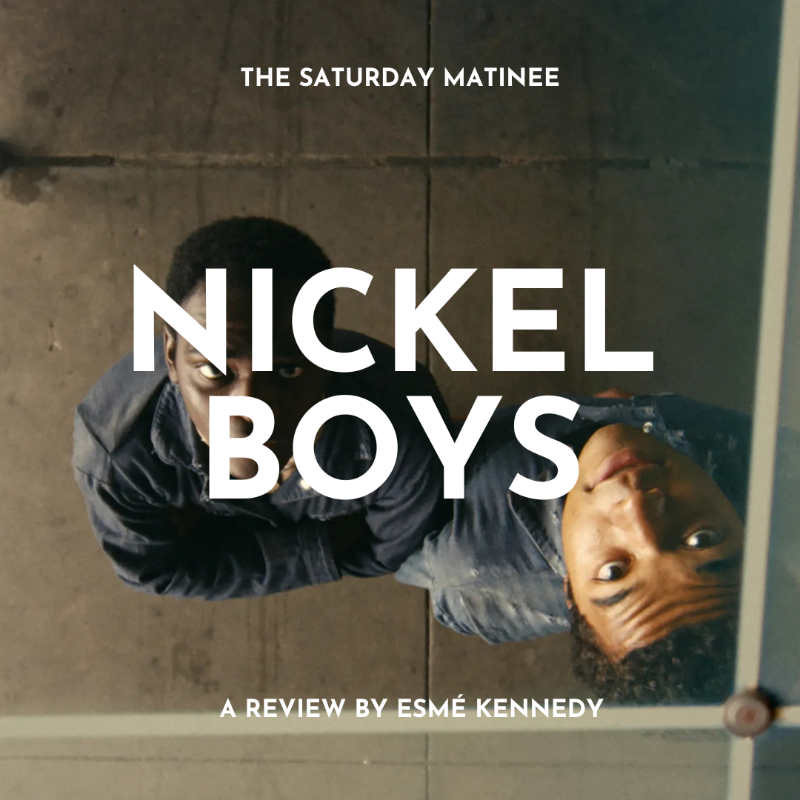
Nickel Boys has been my most anticipated new movie to go see, having read and loved Colson Whitehead’s novel, I was ecstatic to see if the screen could do the heart breaking story justice, and spoiler… I think it did!
The film sets itself apart by cinematography alone. At the beginning, we are put into one of the main characters, Elmwood’s POV. This was admittedly a little disorienting at first, I quickly found myself growing used to the style. The singular perspective however changed as our other main character, Turner's POV is introduced. This was refreshing change was then later supported with the introduction of future ‘Elwood’, where his scenes are all shot as if you were watching over his shoulder.
I was initially worried by the film's cinematography, concerned that it may lean into one of my least favourite trends of recent years… doing something artsy and different for the sake of being artsy and different. But this film was certainly not that, its cinematography was intentional and invited you to see the Nickel Academy in the most intimate of ways, ultimately amplifying your concern and care of the characters.
I can imagine when adapting from the novel, it was challenging to figure out how much of the abuse to show. The book is horrifying in its descriptions of events at points, and it’s an interesting question of where to draw the line at what we can visually show viewers. The film handles this respectfully, taking care to allude to what’s happening through its use of sound and first-hand perspective, without becoming voyeuristic.
Another concern upon hearing of the adaptation was the twist ending of Turner being adult Elmwood. Whilst the twist was still shocking on screen, it did perhaps feel too obvious due to the physical appearances of younger Elmwood and Turner’s actors.
There’s always a fear when a beloved novel is adapted to screen, that the original story will be butchered, but Nickel Boys is happy exception. Whilst I still do prefer the novel (as a self-proclaimed book lover, take this with a pinch of salt) Nickel Boys is a welcome addition. It’s heartbreakingly sad, but an important watch.

Over the last decade, Robert Eggers has seemingly made it a mission to create the most untethered, historically keen and – for lack of a better word, cinematic – films possible. Nosferatu sees him move towards more widespread appeal, with Prussian period sets and supernatural shocks to get the Bridgerton crowd going to just about the same pitch as fans of The Ring.
Honing in on the 19th-century dread, that was his calling card with 2015's The Witch, Eggers uses the existing material from the 1922 horror classic (also handily called Nosferatu) to interrogate the impact and lingering effects of trauma and abuse.
The plot initially follows a young property broker, Thomas Hutter, who is inveigled into a sinister plot orchestrated by the mysterious Count Orlok wishing to purchase land in the port city of Wisbourg. This basic premise (itself lifted from Bram Stoker’s literary classic Dracula) jackknifes into a dynamic new direction by placing Thomas's wife, Ellen, as the eventual and tortured hero of the story. This feature acts as the vanguard for Eggers’ attempts to subvert and bring new light to the original material.
There are shocking scenes, but the Gothic atmosphere created by cinematographer Jarin Blaschke is often more enchanting than terrifying – ditto the sound design which skirts the line between outrageous and blood-chilling. The performances echo this off-kilter quality as well – Bill Skarsgård is very much doing his moody Pennywise from It with a Cossack inflection and Aaron Taylor-Johnson seems completely out of time and place as Thomas' stockbroking chum. Lily-Rose Depp on the other hand towers above the rest of her cast mates and gives a legitimately haunting performance as the beset Ellen. Her demonstration of the nebulous, unpicking effects of trauma and the underlying resolve to endure is one that will stay long in memory.
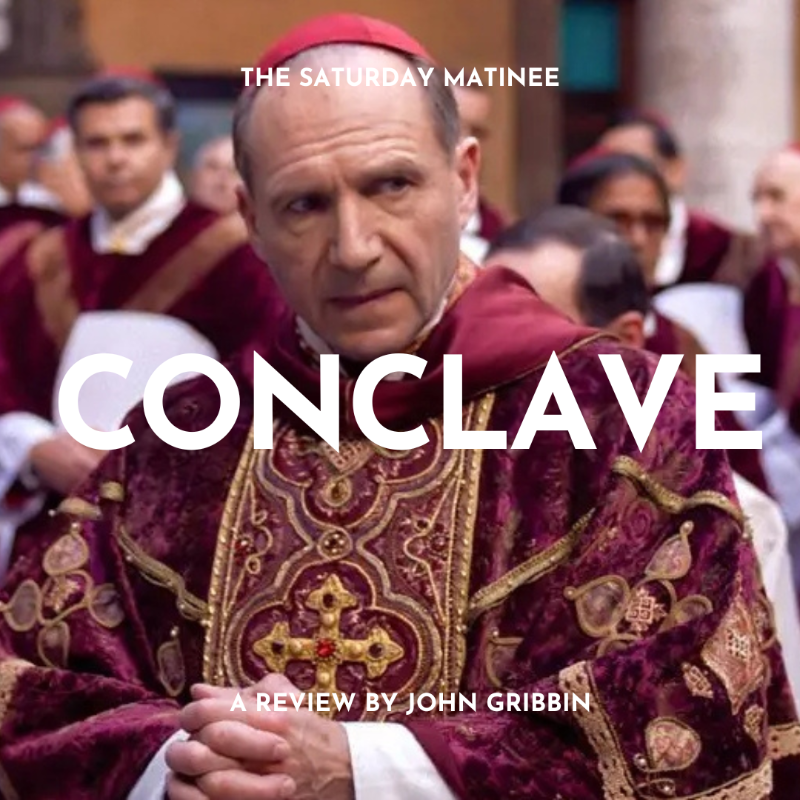
The Pope is dead and his dear friend, Cardinal Lawrence, played by Ralph Fiennes, is charged with the onerous task of running the conclave at which the new pope will be elected. Will it be Cardinal Bellini, the liberal Italian played by Stanley Tucci? Will it be the Canadian Cardinal Tremblay, played by John Lithgow? Or will it be the conservative Cardinal Tedesco, played by Sergio Castellitto?
It quickly becomes clear, even if the tense score by Volker Bertelmann and the dark lighting wasn’t already signalling it, that there are secrets and mysteries which Lawrence feels duty-bound to unmask. There is a tense, unspoken battle between the liberals and the conservatives and we watch in fascination as one secret after another is divulged, tipping the scales in one direction or the other.
Fiennes does an excellent job of what most actors find difficult, portraying a good man. But I was more impressed by the design of the film. It was evidently a dream job for a designer, from the wealth of artwork in the Vatican, the gorgeous Roman architecture, the colour and patterning in the clerics’ costumes, and the wealth of religious iconography, right down to the markings on the ballot papers. We see cardinals in the rain, all with black umbrellas; later we see them converging on the Sistine Chapel with white parasols, like a scene from Les Parapluies de Cherbourg. The camera keeps returning to the images of Hell painted on the ceiling by Michelangelo.
I was also taken by the delicacy of the portrayal of the clerics. In the present era, any film about the church has the ever-present shadow of abuse and corruption flitting about in the background, so it is a surprise to see priests portrayed as gentle, compassionate and warm human beings. Particularly touching is the obvious affection Lawrence and others felt for the dead pope. Even those characters whose dark secrets are exposed are treated with understanding and forbearance.
Finally, I was struck by the central message of the film, articulated by Lawrence when he gives an ad hoc homily about the sin of certainty and the need to allow doubt into the church. A film so respectful of, and attentive to, tradition makes the argument that what is important is not yesterday, but today and tomorrow. It made me remember John XXIII who, in the context of Vatican II in the 1960s, is said to have wanted to open the windows of the Vatican and let in a little fresh air.
Conclave begins in a tunnel as we follow Lawrence walking towards the Vatican. Much of the film is shot in a penumbra with light disappearing into dark shadows at the edges of the screen. There are many closed doors and closed blinds, but at one point a window shatters and light streams gloriously into the Sistine Chapel. And finally, towards the end, Lawrence himself opens wide a window and the camera peers out at a bright courtyard with three young nuns crossing playfully. A call perhaps for a return to the hopeful, youthful, radical idealism of sixty years ago.

Thoughtful, chaotic and haunting. Rungano Nyoni uses On Becoming a Guinea Fowl to scream out a message most relevant in the turbulent times we found ourselves in.
Our protagonist, Shula, finds her Uncle Fred’s dead body on the side of the road. Seeing her younger self looking back, she locks herself in her car as she waits for the police to come and get him. From then on, we watch her suffer. Suffer from her suffocating family's expectations, to her reliving the trauma and having to mourn a predator, Uncle Fred.
Throughout the film, we are met with mostly an entire female cast. Aunties, Mums, Cousins. We watch them complete traditions, such as crawling on the floor instead of standing, sleeping all together in the living room, cooking for the male family members. We see this community of women, who ultimately turn on each other, pressured by the patriarchy so annoyingly looming over the film.
Before the events took place in the film, Shula was the one to share. The one to whisper about her Uncle Fred and who he truly is. I thought at first, Shula hadn’t told her family of her trauma, that she had kept it a secret. But as more and more of the young, female family members reveal that they have a shared trauma, Shula finally reveals that she had not been silent, but ultimately was silenced. The ending reveals that everyone knew all along of Uncle Fred’s ‘behaviour’ and transgressions is what frustrated me the most.
Shula had tried to warn, had looked for her family for support, yet they covered it up, only for it to happen again and again and again. Beatrice, Shula’s college-aged cousin remarks, ‘It doesn’t matter, He’s dead.’ It’s this the film condemns, it does matter, especially when considering that abuse is cyclical.
The ending, though a little underwhelming, is Shula's attempt to be louder this time, to break the circle, to be the Guinea Fowl.

I know I shouldn’t be comparing Gladiator II with the original but how not to? Maximus Decimus Meridius casts a long shadow and the sequels’ opening (hazy/impressionistic animations of key scenes from the original) sets Gladiator II up as a legacy movie and I feel it failed to rise to the mantle but - was I not entertained?
Too right I was!! Gladiators wrestled baboons, fought from atop rhinos and in a Coliseum flooded with shark invested waters. The cinematography, choreography and special effects were phenomenal, and I winced, ducked and held my breath.
Denzel Washington was uncanny as the megalomanic directing the fall of Rome, Pedro Pascal was all heart and Joseph Quinn’s and Fred Hechinger’s mixture of subtle evil and raw lunacy as the twin emperors was fantastic. Connie Nelson was caught short at times but was solid enough to hold space for Paul Mezcal to shine and shine he did. His immense physicality and nuanced emotional resonance made the movie shimmer around him despite the occasional piece of inauthentic dialogue letting him down.
Unfortunately, Gladiator II remained an imitation of the first except without any real heart because we never invest in the “Dream of Rome”. We care about Maximus because we feel the righteous anger of betrayal and we love seeing it aimed at true evil. Personal justice speaks to us in a way that the idea of a city never will.
A friend put it well in saying the movie was all plot and no story. Lot of stuff happened, the protagonist changed, as did the world around them but there’s no soul to the movie because no matter how excellent Paul Mezcal and Co were, we never inhabit Lucius the way we did Maximus.
As a work of art, it rings of forgettability that seems built into the story and was never going to be undone despite exceptional direction, acting, choreography, cinematography, props, SFX et al ad infinitum. As a piece of entertainment, it’s the blockbuster of the year, an absolute thrill ride and worth every penny you’ll pay your local cinema for the pleasure.
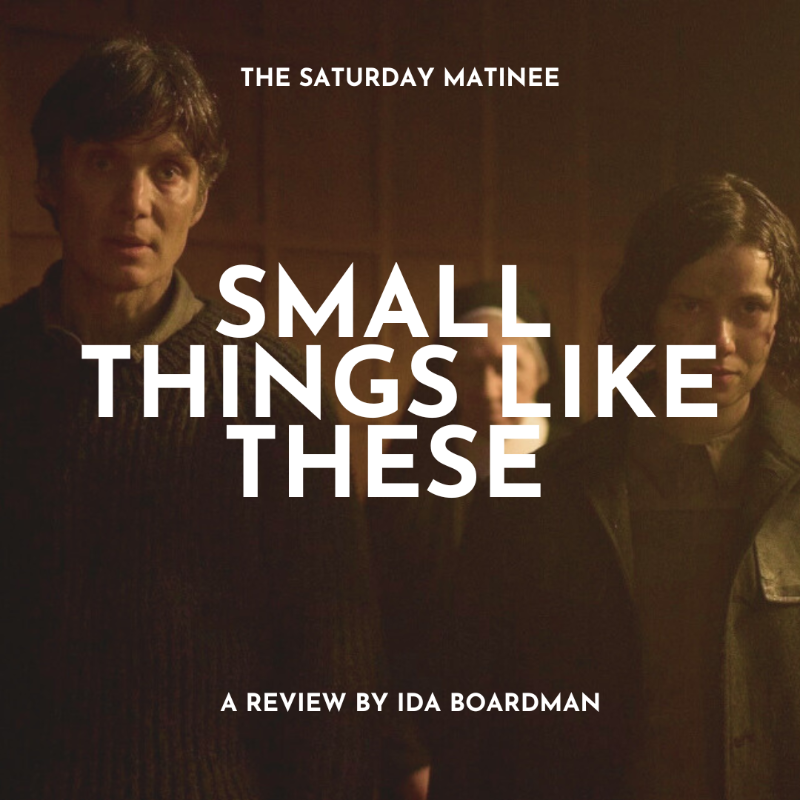
This review discusses the ending of the film.
Subdued but absorbing, subtle yet moving. The slow pace lets you sit in the uncomfortableness, and feel the weight of Bill Furlong’s inner conflict. Small Things like These is not an easy watch.
The film follows Bill Furlong, played by Cillian Murphy, a coalman in County Wexford in the early 1980s along with his wife and their daughters. Furlong uncovers abuse occurring in his local convent and is pushed into making a decision that will either sacrifice his morals, or ruin his reputation. Murphy’s brilliant performance anchors the film and so much of what is impactful results from what goes unsaid.
When Bill tells his wife, Eileen, about how one of the girls in the convent came up to him –begging and crying for him to help her- Eileen asks “What do we have to answer for?” This is the primary tenet of the film. ‘Small Things Like These’ tries to address the questions that arise around cases of historic abuse: How could this happen? How could it go on for so long? Why didn’t anyone try to stop it?
While other films have tried to convey the harrowing experiences of those who were confined within the Magdalene Laundries, ‘Small Things Like These’ offers the perspective of the bystander and how it feels to watch something that you know is profoundly wrong but feeling so utterly suppressed that you cannot or feel you should not help. The central irony of the story is that Bill is a man who cares deeply about his family but lives in a dysfunctional society where the institution of the family is more venerated and protected than the human beings that actually constituted it.
The film ends with an unusual tonal shift as Bill leads the girl he had rescued from the convent smiling into the living room to his wife and daughters. I think this dreamlike ending is an acknowledgement of how Bill’s bravery was truly exceptional. Due to fear and coercion, the Laundries operated throughout the 20th century largely unopposed. Indeed, many of the Magdalene Laundries shut down because they were no longer commercially viable and as such, the advent of the domestic washing machine did more to abolish these institutions than the Irish State ever did.

At first look, Girls Will Be Girls seems like a coming-of-age film in which a young teenage girl experiences a sexual awakening, this intertwined with a love triangle between a daughter, mother and daughter’s boyfriend. However, at the end, I walked out of the cinema realising that the film is anything but a love triangle.
The film explores how women are pushed into loneliness, igniting rivalry amongst themselves, due to India's patriarchal society. Mira's mother, Anila, regretfully married her husband in her early twenties. Anila's husband fits within the stereotypical working and absent male figure, while Anila becomes the housewife. The lack of love and attention Anila receives gradually initiates loneliness with her. Thus, when Mira's ambiguous boyfriend, Sri comes into the picture, Anila feels underlying contempt and jealousy of their relationship, despite her love for Mira. Sri seemingly takes advantage, turning the mother and daughter against each other in a bid for his attention.
The male characters suffer almost no consequences, adhering to the patriarchal system, upholding an ideology of male dominance. Sri is underaged for the majority of the film, which leads to question his anatomy. I have to put forth what may be a controversial query: Shouldn't his morality at least be put into question, despite his age, due to his awareness of his own disruptive actions. There is a tension between Mira and several male classmates which builds throughout the film, where the boys are first excused of taking upskirt photographs, their actions being infuriatingly dismissed as 'boys will be boys.'
Girls Will Be Girls is a poignant film that raises this question: Why are girls, especially those like Anila, never allowed to actually experience girlhood, while boys are often excused for their misbehaviours? I believe girlhood should be explored as a means for empowerment and self-discovery.
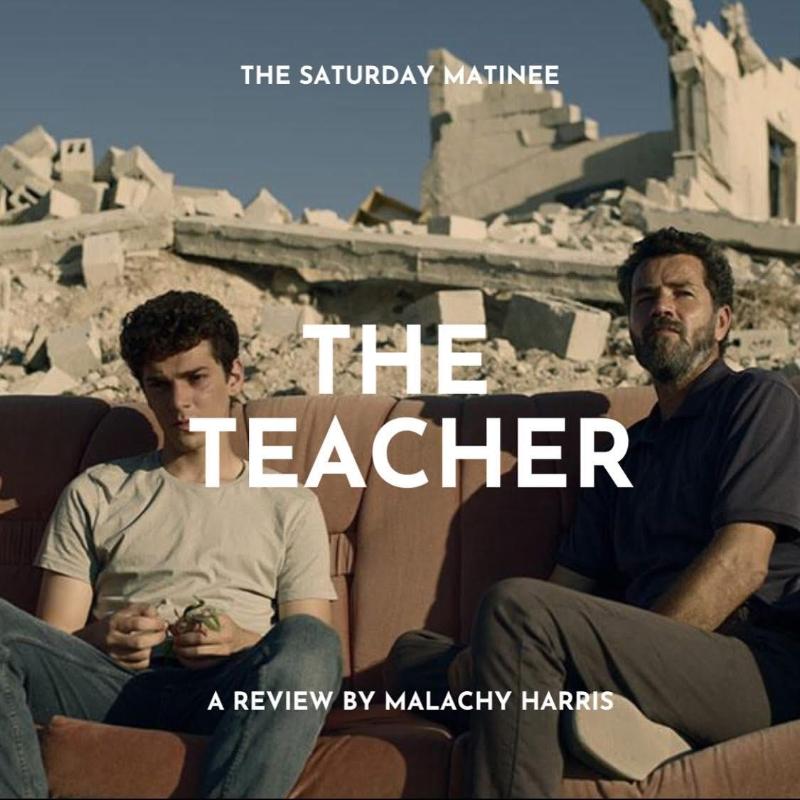
While I wish that it would be possible to evaluate Palestinian art purely on its merits – of which The Teacher has many – the present situation makes it impossible to do so, and insisting otherwise feels dishonest.
The current deadly and illegal assault on Palestine – particularly in Gaza – orchestrated by Israel, with the cooperation of Global North governments such as that of the UK and the US, has led to untold suffering: tens of thousands of Palestinians have been murdered, family histories have been erased, universities have been demolished, hundreds of thousands of people have been driven out of their homes, and many more are facing famine and both lack of access to water and electricity.
Saleh Bakri’s performance as Basem El Saleh, a schoolteacher living in the West Bank in and around 2014, is excellent, as is that of the other leads: Imogen Poots as Lisa, a British volunteer working in a school in Nablus, and Muhammad Abed Elrahman as Adam, a student of Basem’s.
The chemistry between Bakri and Poots is believable, tender, and sweet, and earlier in the film Poots gives a convincing performance of someone who is clearly out of their depth – given the way that Palestinians are treated with contempt by Israelis in every aspect of their lives.
There are moments in the film which are gut-wrenching: when Adam’s brother, Yacoub (Mahmoud Bakri) is shot by settlers, there wasn’t a dry eye in the house, as well as when Basem offers himself up for arrest instead of Adam towards the end of the film.
The movie does a brilliant job of portraying, through their own eyes (the director, Farah Nabulsi is herself Palestinian), the way that Palestinians are unable to approach justice and are prevented from speaking for themselves. This film feels like an attempt at reversing that, in a small way, telling a Palestinian story from a Palestinian perspective: giving an impression of the totalising force that they are subjected to. Watching it will make you feel angry and sad, and while there are glimmers of hope, they are few and far between.
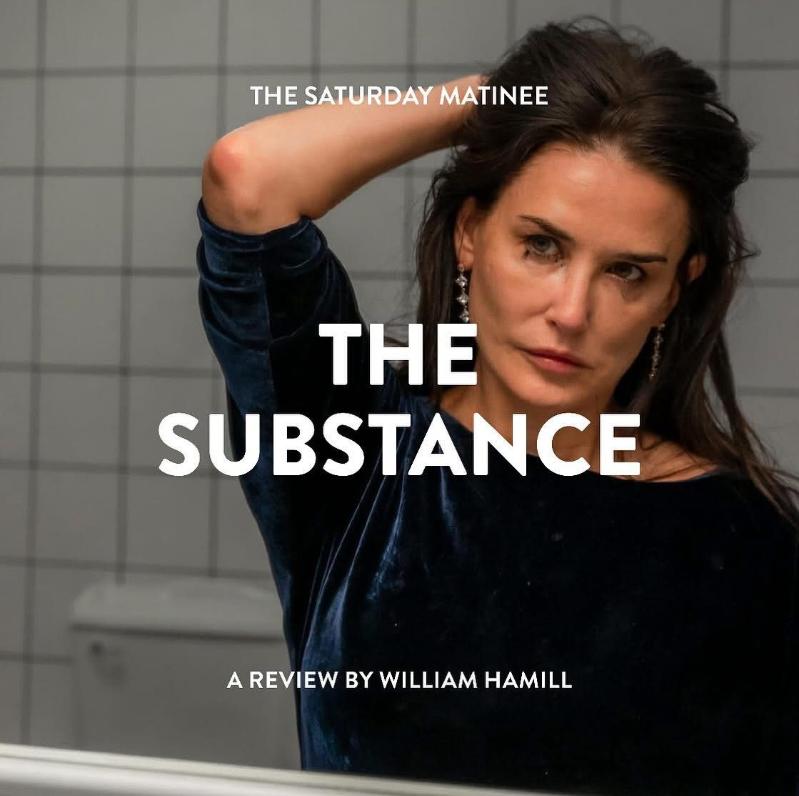
If you are looking for a calm, easily digestible, upbeat movie for the family, I can hundred percent say that The Substance isn’t that. BUT it’s a movie that every ADULT must watch.
The Substance gets inside of you and becomes alive, coursing through your veins. It’s inescapable, like a substance.
Prepare to cover your eyes at times, as your brain can’t quite handle what it is witnessing. It escalates in intensity consistently throughout with little rest. This escalation may be higher than what many viewers are used to, it’s a ride.
The movie is in a category of its own. It makes the viewer experience an assault on all their senses, yes, even taste as you feel slightly unwell from some of the visuals. A sensory overload with its extreme close-ups and loud, almost ASMR sound which involves everything from an obnoxious man eating a slimy prawn cocktail, to a syringe entering someone’s spinal cord repeatedly.
It’s an uncomfortable watch as a result, yet I believe this to be the movie’s intention, especially in line with the theme of the objectification of the female body in Hollywood and the media. This discomfort caused by many gruesome scenes and the story which unfolds makes the viewer think about the ridiculousness of body image expectations women experience daily, as well as the pressures of an aging female body.
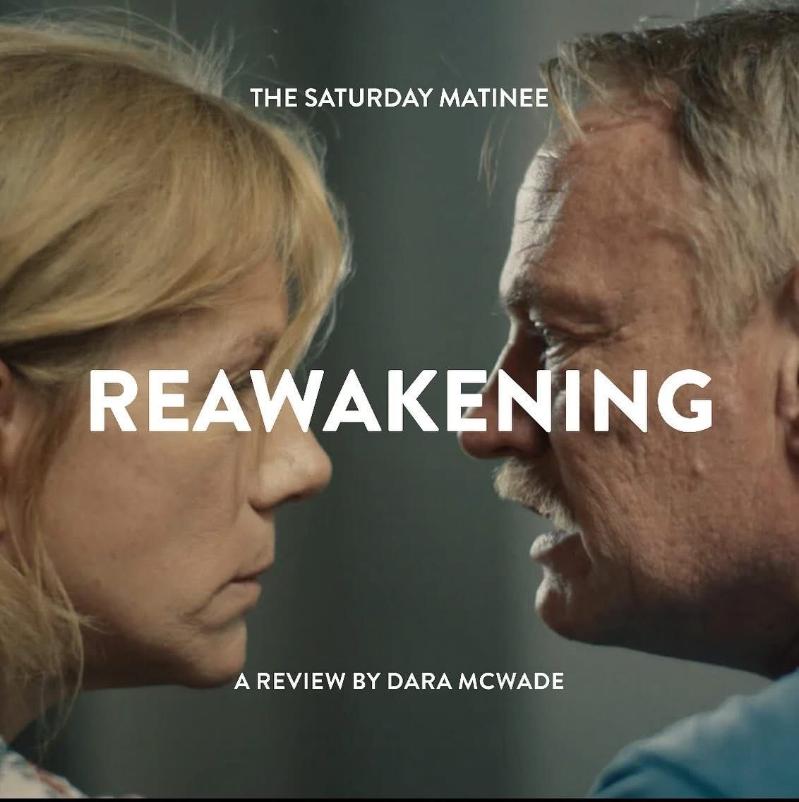
Two things I’d like to talk about Virginia Gilbert’s haunting drama Reawakening.
The first is its tricksy, malleable premise; a young girl, long thought missing, returns to her parent’s home after a decade. The mother is overjoyed, reawakened to life. The father, however, cannot believe the girl is his daughter. How do ordinary people respond to this kind of grief?
There’s a great tension around a third of the way through any film – the break to the second act, as it were – where it reveals the different paths the story could take. Whether the premise is played straight, whether the premise is subverted, or if it will go in a different direction. The film seems to ask – as we ask too – what kind of story am I?
Reawakening presents multiple possibilities. It could be that the father is hiding something, and knows this girl is not his daughter for a fact. It could be that he’s struggling to reconcile his life’s purpose, looking for his daughter, with that task’s completion. Or, it could be about something else, something truer. As the layers of this story unfold, it tells us how to read it, and what it believes about the world.
The second is the film’s lead, Jared Harris. Is there any contemporary actor with more on-screen integrity than Harris? There is something so calming, soothing, about his onscreen presence, that can turn itself to pride or ego in seconds. He’s been fantastic in much of the last decade’s best TV - Chornobyl, The Terror, Mad Men – but Reawakening gives him a rare star turn. It’s his integrity that is most terrifying; when a man fiercely believes in something he will allow himself to do all sorts of things he knows are wrong. This is the tension that holds the film together, that gives it the burst of a thriller. We know Harris will follow what he thinks is right; but what path is right? Is there a right path a family can take in a situation like this? Perhaps there is only one decision; whether to open or close the heart.
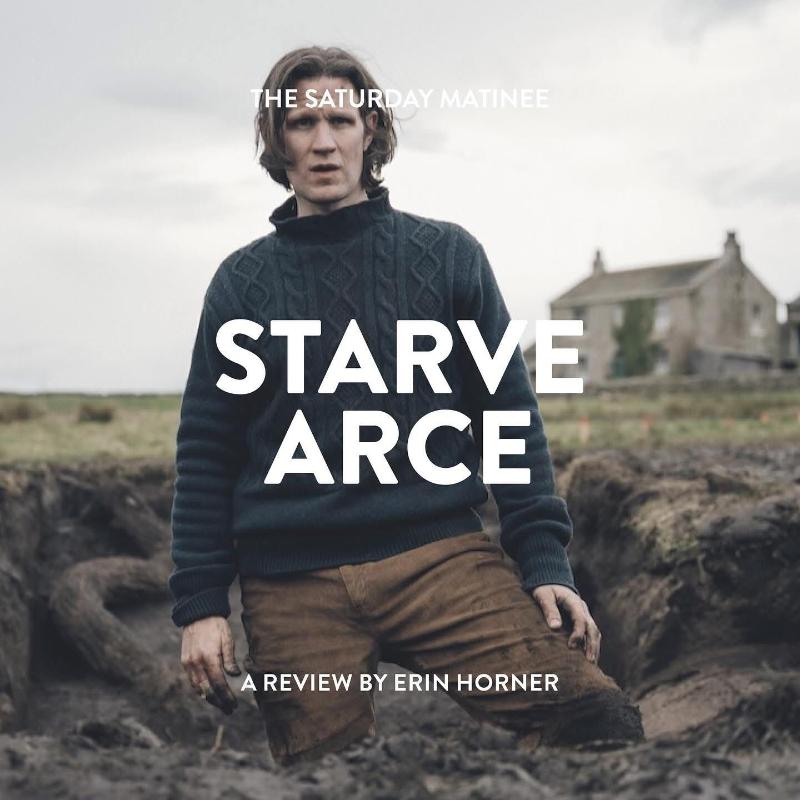
This review discusses events from the whole film, including the ending.
“Jack Grey, Jack Grey,
Get to your feet,
The mast is up,
The roots are deep.”
Daniel Kokotajlo’s Starve Acre is an eerie and cinematically striking British folk horror, set in 1970s Yorkshire, and based on the novel of the same name by Andrew Michael Hurley.
Matt Smith and Morfydd Clark play husband and wife, Richard and Juliette, who have recently moved to Richard’s childhood home in hopes of helping their troubled son Ewan, who has been experiencing auditory verbal hallucinations. The optimism quickly subsides when Ewan suddenly dies of an asthma attack, and Richard and Juliette are left heartbroken living in an isolated countryside house where malevolent forces seem to be at play.
This is a film reflecting the different ways we deal with grief and trauma and the impact this can have on the ones we love, as Juliette turns to the supernatural in an attempt to bring their son back, Richard becomes consumed by his work as an archaeologist, uncovering the secrets of Starve Acre, the mysterious legends of the ancient oak tree, and confronting unresolved issues from his childhood.
A recurring presence in the film is the hare, which first seems to be an innocent and craven animal. Juliette and Richard find the hare in their home, capture it and set it free but it is soon to return, eventually revealing itself to be a manifestation of the land's curse. The film leaves the audience shocked and disturbed, as the couple are psychologically and physically consumed by the hare, welcoming its supernatural forces into their lives and resulting in an unforgettable conclusion.
The film uses muted brown and green earthy tones, coupled with desolate landscapes capturing the beauty and isolation of the Yorkshire countryside. The sound design masterfully blends a serene woodland soundscape, with the piercing instrumental that keep viewers on the edge of their seats.
Whilst Starve Acre succeeds in creating a deep sense of unease through its haunting soundtrack, beautiful visuals and gripping performances, its slow-burn pacing and ambiguous narrative misses the mark in satisfying those seeking a conventional, jump-scare horror experience. Although the film is certainly worth a watch, it may not be worth repeat viewings.

This review discusses the end of the film.
We here to become human again, to enjoy the things that is not in our reality
The film opens on stage. The players take their bows before exiting, removing their costumes and getting back into their prison uniforms. Removed from the dreamy lighting of the stage to the harshly lit hallways of the prison, our actors escorted back to their cells. This is Sing Sing.
Greg Kwedar’s 2023 drama Sing Sing follows the true story of Divine G (Colman Domingo) who is serving time in the Sing Sing correctional facility for a crime that he did not commit. While in prison, Divine G becomes a founding member of the RTA: Rehabilitation Through the Arts. The movie follows these men as they stage their original comedy Breakin’ the Mummy’s Code and eagerly seek to find joy amongst the dehumanising landscape of Sing Sing maximum security prison.
The most striking feature of Sing Sing is the setting. The usual cinematic zeal of the prison landscape is stripped down to its rawest form to reveal hurt and vulnerable men seeking to find comfort in each other. To escape the usual violence that follows them like a shadow. None of these men fall victim to stereotypes of ‘men behind bars’. These are men who discuss their love for Shakespeare, quoting verses from memory. Men who earnestly discuss the ramifications of time travel in their play. Men who insist on playing the role of Freddy Krueger in said time travel play. They dream about seeing their mothers again. Their wives, their children. Dreams of cherry water ice dripping down their chin. Of mowing the lawn.
While most of Sing Sing’s run time is filled with more upbeat moments of connection between the members of RTA, it is punctuated by brutally silent moments of reflection on the US prison system. They come quickly and without warning. The most cutting example is the short scene in which Divine G walks defeatedly back into his cell after it has been trashed by guards in a routine search that is especially cruel. His typewriter thrown to the ground. His small locker emptied and overturned. His bed covered in his torn books and manuscripts. The silence of such sequences forces the audience to reflect on these injustices in the US prison system. It is easy to forget the setting of the film and Kwedar has no problem reminding us.
By far the most powerful moment of the film is the end credits. Audition clips from earlier in the film are played again except now they introduce us to the men behind such powerful performances:
Clarence “Divine Eye” Maclin as himself.
Sean “Dino” Johnson as himself.
Jon-Adrian 'JJ' Velazquez as himself.
Most of the film’s cast are alumni of the real RTA programme in a tear-jerking reveal.
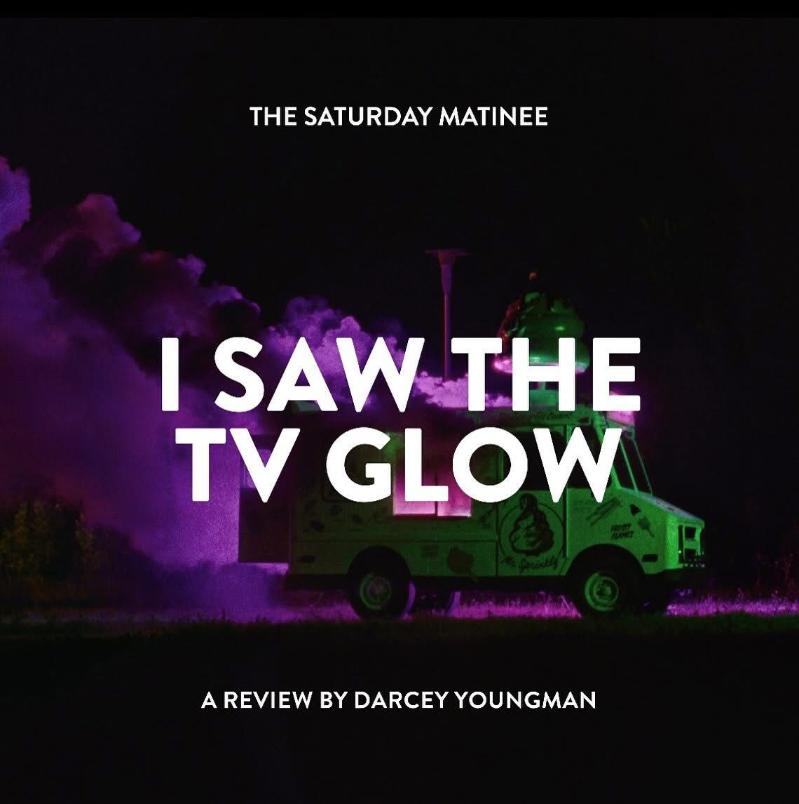
This review discusses the ending of the film.
A visually vibrance which hides feelings of longing and inadequacy underneath. I Saw the TV Glow is an abstract film that challenges not only identity binaries, but the cinematic experience.
Owen is a young teenager who seemingly exists in a small, quiet town. However, we see strobe lighting and bright colours throughout, such as the glow from the tv, from chalk on the streets, and from vending machines in the school canteen. The two recurring colours, however, remain blue and pink. A binary.
Everything is a mirror. A binary, constantly in twos and moving fast. Yet, this is what the film asks us to question. The film tackles binary through the exploration of its themes and characters. The character Maddy’s physical appearance and costume changes from light pastels and crop tops to more masculine centred clothing, such as a suit and having their hair cut short highlights this.
It wants us to see what lies under the binary. The glow is the opening, the film invites the spectator to come into a world beyond the screen, beyond the voyeur position of us and them. It asks us to dismantle our ‘roles’ as the audience member.
As Owen opens their chest, looking for their missing heart, all we see is tv static through a mirror. They smile, an acceptance of a fake reality they have been living. Their perception warped. The lights figuratively and physically shine a light on a ‘truth.’
I Saw the Tv Glow attempts to challenge perception, of truth and roles within not only society, but the film going experience. Who are we as a spectator and what are we supposed to take from films in general?
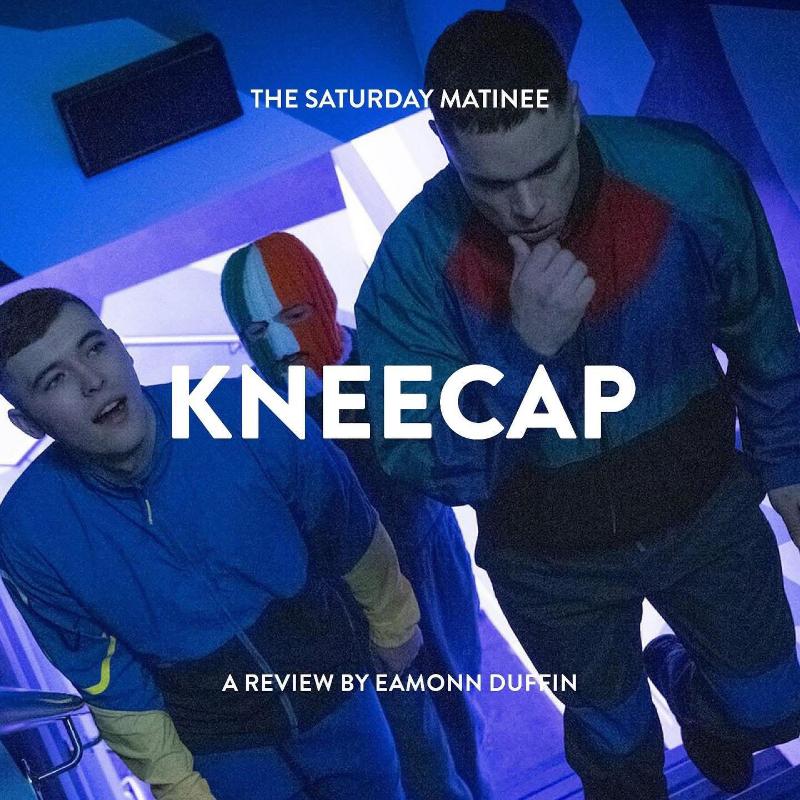
Public Enemy told us ‘Don’t Believe the Hype’, but I think if they catch the movie Kneecap, the ridiculously entertaining, mostly true, origin story of the three West Belfast rappers, they might change their minds. This film is the best thing to come out of Belfast since, well, the Bap.
The movie tells the story of Mo Chara, Móglaí Bap and DJ Próvaí, (all brilliantly played by themselves): three bored, lost lads living in West Belfast who bond over a shared love of the Irish language and rampant drugtaking. Like demented evangelists, the boys decide to start a rap group with lyrics in Irish to promote the language they feel is being ignored and forgotten, with very funny, raucous and at times chaotic results, all ably captured by director, Rich Peppiatt.
The film comically tackles so many of the hang ups of the troubles, poking an enormous whale’s backbone length of stick at our recent history, while showing how far we have moved on, but also showing how much we still have to go, with the boys attempts to promote the language overlapping with the collapse of the Stormont government over the implementation of the Irish language act.
This is not a film about the troubles - as Kneecap state at the beginning - this is a film about identity, something so important in the North of Ireland/Northern Ireland (point proven), but it’s hard to have a film set in Belfast that doesn’t touch upon the conflict. Several of the subplots comically tackle the sectarianism - never have I laughed so much at Tiocfaidh ár lá - and the menacing shadow of the hypocritical dissident paramilitary groups who refuse to go away. The film also tackles the effects of generational trauma, still so strong, twenty-six years after the GFA.
Yes, this film will offend those who ache to be offended, but it’s more about what unites us, than divides us, telling is that our art and music can rise above the identity politics that form so much of day-to-day life in the North, and that with a sense of humour, some belief and some banging bloody tunes, you can reach people.
Go get yourself Kneecapped. It’s worth it alone for a superb cameo by Gerry Adam.
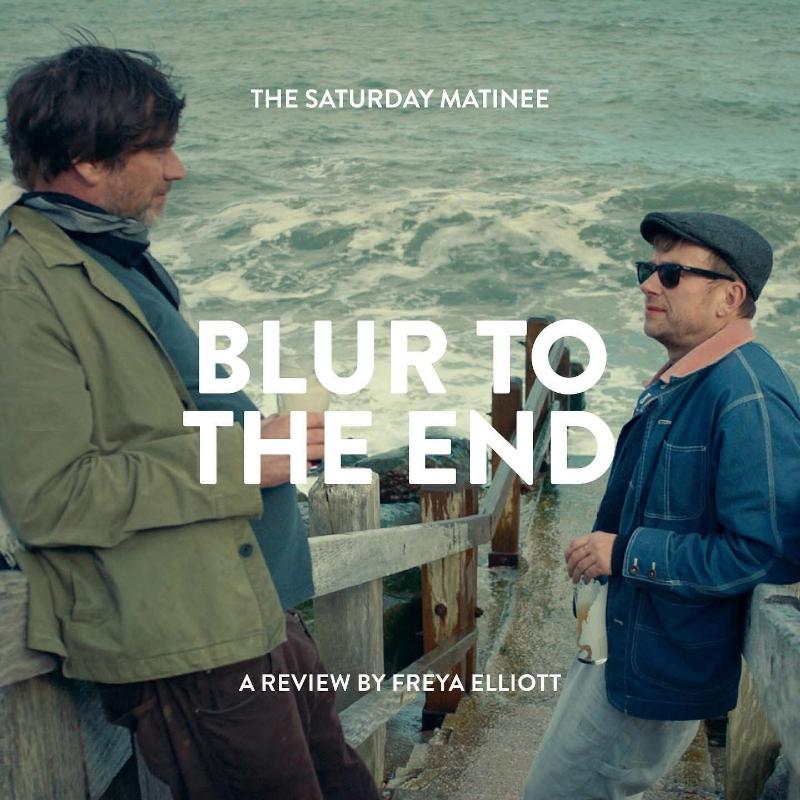
Blur: To The End is the latest in several documentaries following the 90s Britpop group Blur. This time, with a little less chaos and rather more ginger tea. It follows Damon, Graham, Dave and Alex, now all in their fifties, who, after many years of inactivity (and virtually no contact) have found themselves preparing to play Wembley Stadium, a venue they, by their own admission, were never famous enough to play during their prime. And because Blur’s frontman, Damon, would seemingly drop dead if he had a moment to relax, decided to do a tour and a new album to go with it.
The doc manages somehow to place itself rather firmly in its present, even with its ample opportunities for nostalgia. Each of the bandmates reference politics, ageing, and all four’s eventual purchase of “a very big house in the country”, despite the scathing lyrics they once sang and believed.
When the film does delve into the band’s past, it is honest about it. Blur acknowledge their many faults, their ever-precarious relationships with alcoholism, and their uncountable fallings out over the years.
In Damon, we are given a fascinating portrait of an extremely hyperactive man who shouts and swears at his bandmates, chain smokes, almost crashes his car, works so hard he literally falls asleep at the piano and yet, sits and sobs with his whole body when he plays the new album to his bandmates for the first time.
Though the film’s formal elements are not particularly artistic, it remains compelling due to its sentiments, its characters, and a lot of fantastic concert footage (though Irish fans will be disappointed by its very fleeting look at their Malahide Castle show), but most of all audiences will be struck by the doc’s tenderness. The hugs, the quiet compliments, and the reluctant pride.
To The End is a film about four grumpy and somewhat resentful men in their fifties, who, despite it all, love each other very, very dearly.
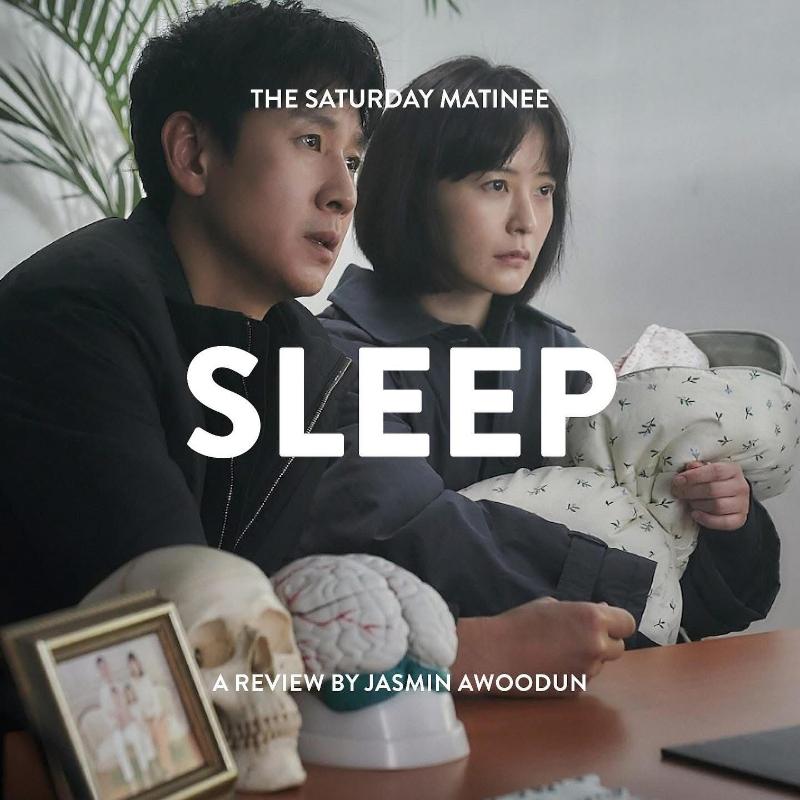
If your partner talks, walks, or eats raw meat in their sleep, this Korean thriller will make you see them in a chilling new light.
The premise: Hyun-soo and Soo-jin are an ordinary married couple expecting their first child until Hyun-soo’s sleepwalking takes over their lives. From there, Sleep twists and turns its way through black comedy, mystery and horror en route to an extreme, shocking conclusion that manages to be both absurd and completely believable.
You rarely, if ever, know what to expect with Sleep, yet the clues are woven in right from the earliest scenes. At the start of the film, Soo-jin grabs a power drill to defend against a potential intruder in her home — knowing this to be her weapon of choice, I should have anticipated the bloody climax. Instead, my unease grew each time the drill made an appearance, wondering just how far Soo-jin would go.
Despite the extremes of insanity showcased in Sleep, and the downright bizarre behaviour of the characters, it’s remarkably subtle in its handling of the subject matter. The film rarely feels the need to explain what’s going on, trusting the audience to figure things out for themselves. It doesn’t bash you over the head with its themes, but allows them to emerge naturally, something surprisingly rare and much appreciated.
The ending is also beautifully ambiguous and offers a lot for the viewer to chew on. Are we watching Hyun-soo, the professional actor, put on the performance of his life? Or was Soo-jin’s supernatural explanation right all along? Sleep invites you to ask these questions, and I thought about them the whole way home.
Overall, Sleep is an entertaining and disturbing watch that truly embodies the spirit of ‘til death do us part’, while exploring the lengths our superstitions can drive us to.
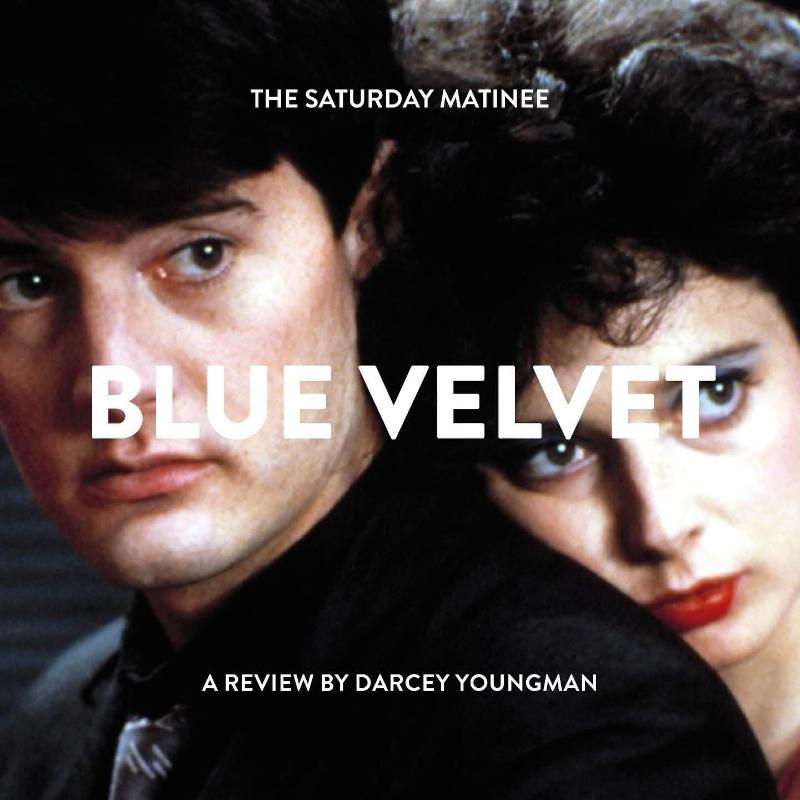
Inspired by the 50th anniversary restoration of Francis Ford Coppola’s neo-noir thriller The Conversation, in July, QFT screened a festival of noir detectives, from classic noir’s police investigators to neo-noir’s common people turned amateur sleuths.
Blue Velvet is Lynch’s love letter to noir, exploring genre conventions by twisting it on its head and re-defines expectations.
The Queens Film Theatre recently ran a Noir Festival, re-screening classic examples of the genre. One of the films within the lineup was David Lynch’s 1986 Blue Velvet. The film itself is notorious for its shocking violence, body gore and alienation. In conforming to genre conventions, the film succeeds. The low lighting exposure, the mystery plot line, the morally ambiguous and curious protagonist. However, the most striking element is its use of contrast.
Upon re-watching the film on the big screen, the contrast doesn’t come from your traditional good vs evil, but by using comedy. The constant reference to Jeffrey’s, our protagonist, love for Heineken. To his nonchalant behaviour upon witnessing horrors, such as the decapitated ear he finds in a field, which acts as a catalyst for his journey. He picks up the ear, carrying it in a small paper bag he also finds in the field. Carrying it while walking himself to the police station. No screams. No shock. As if coming across a severed ear was commonplace.
The comedic moments make us laugh, but at the most inappropriate times. The Heineken gag is used again, when Jeffrey comes face to face with the antagonist of the film, Frank. Frank asks Jeffrey what beer he likes, and Jeffrey responds ‘Heineken.’ We laugh at the absurd nature of it. But it’s a nervous laugh, anxiety inducing as we fear what will happen to Jeffrey.
Blue Velvet is filled with these alienating moments. In one of its more violent scenes, Frank is assaulting Dorothy, our femme fatale character, while performing stomach twisting acts, he screams mommy while taking air from an oxygen mask. This is comedic, but in the context its terrifying and jarring.
The use of contrast solidifies Blue Velvet as a neo-noir, re-inventing the use of contrast through comedy and making the spectator laugh in such horrifying moments.
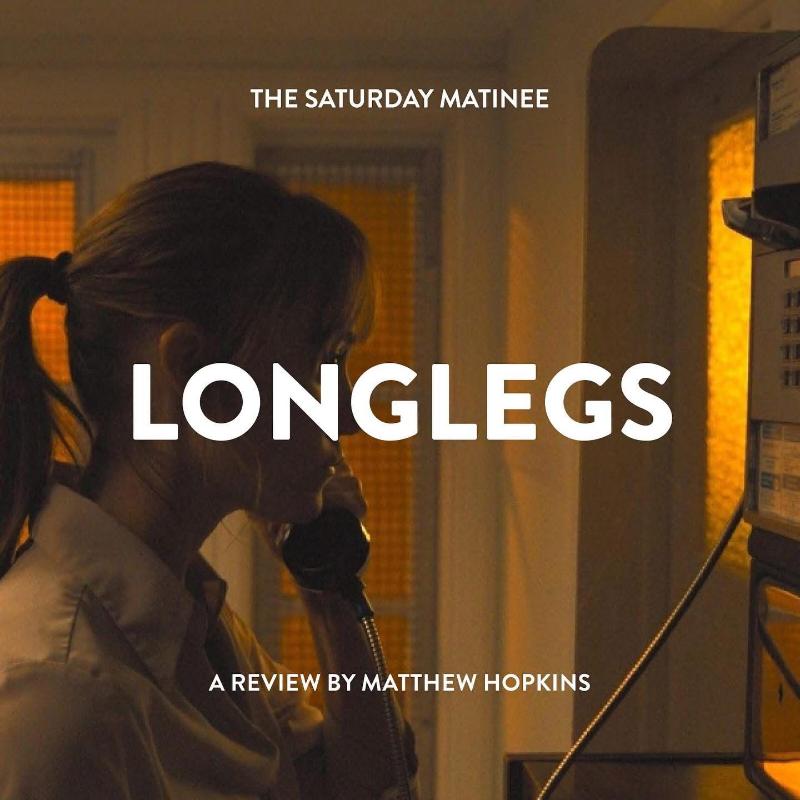
Warning: This review discusses events from the whole film, including the ending.
He’s a friend of a friend.
Director Osgood Perkins posits that evil is everywhere and all the love in the world can’t stop it from finding us. A young Lee Harker’s house is isolated, cold and quiet, but it still finds her; in the suburbs, Harker’s FBI partner is suddenly, violently killed and the killer’s house is empty but for plastic sheets, a fan. Subconsciously, as the film progress, our eyes are glued to the negative space – aided by the equal emphasis placed on fore- and background by the framing – waiting for evil to loom out at us. Then, it does.
The Devil – glibly referred to as Mr. Downstairs – is a huge, ram-horned shadow that lurks in corners throughout, not hiding so much as barely perceptible but is suddenly right there, right behind Lee. Does that make him her shadow? He lingers as Lee’s mother, Ruth, tries to save her from the evil that has forced its way into their home.
Parents will do anything to protect their children, and Ruth is no exception. In a nightmare-inducing twist, it’s revealed that Longlegs took advantage of her love for Lee, forcing her into being his accomplice. But it’s in her continuing action that holds the turn – Ruth’s love is corrupted into something all the more sinister as time progresses, her barely disguised glee in her murder-monologue is utterly skin-crawling. She killed, and she killed, and she killed, but it’s all for you. Aren’t you grateful? Don’t you understand?
When Lee pleads for her to stop, she snarls don’t call me mom! while unsheathing a ritual dagger. And the daughter this was all for pulls the trigger.
Longlegs is an unflinching look into the complex interplay between love and evil, and how the latter can so easily corrupt the former. They are both all around us, in the places where we never think to look and, sometimes, even right below our feet.
He’s a friend of a friend of a friend of a friend. Oh, he’s everywhere, Mr Downstairs
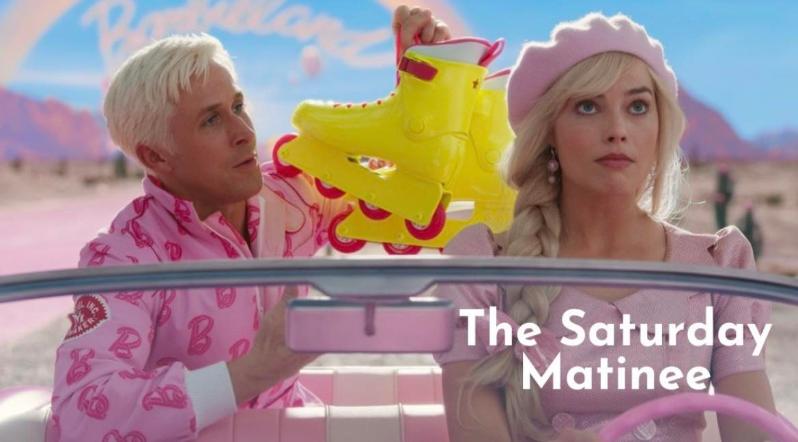
Greta Gerwig’s Barbie is pink, beautiful, nostalgic, and simply exceptional. The film takes place across two worlds, ‘Barbieland’ and the ‘Real World’, tracing the ideological similarities and differences between them.
As Gerwig explores what feminism entails, Barbie puts forward essential ideas about womanhood and equality with a light touch.
Moreover, Barbie explores what it means to ‘only exist within the warmth of [someone’s] gaze.’ It underlines how women have existed under the male gaze for centuries, which leads women to be self-conscious and self-effacing. Barbie highlights this while also reckoning with how fragile, fluid, and impressionistic our identities are, and how they are both personal to us and interlinked with the society in which we exercise and perform identity.
Barbie is not only a reclamation, but for those of us who have grown up with Barbie dolls, it offers closure, as ‘the stereotypical Barbie’ performing the Eurocentric standards of beauty challenges the system she is a part of, recognising beauty as a fluid concept rather than an ideal. In this way, Gerwig explores the differences between being a creator and the product that is created, between reality and the ideal, as she underlines the power that comes with being questioning, creative, and imaginative.
With songs that are beautiful and coherent to the film, with costumes that are nostalgic for the accessories of the Barbie doll, Barbie is smart, witty, and sarcastic. I recommend letting the credits roll till the end so you can listen to Billie Eilish’s ‘What Was I Made For?’, a song that sheds light on the themes explored in Barbie but is also endlessly tender and evocative.
The movie often breaks the fourth wall and invites the audience to be part of the ‘Barbieland’; it's loud, wholesome and heartwarming, all the while exploring feminism, the nightmares of patriarchy, and arguing for equality. A classic Greta Gerwig film!
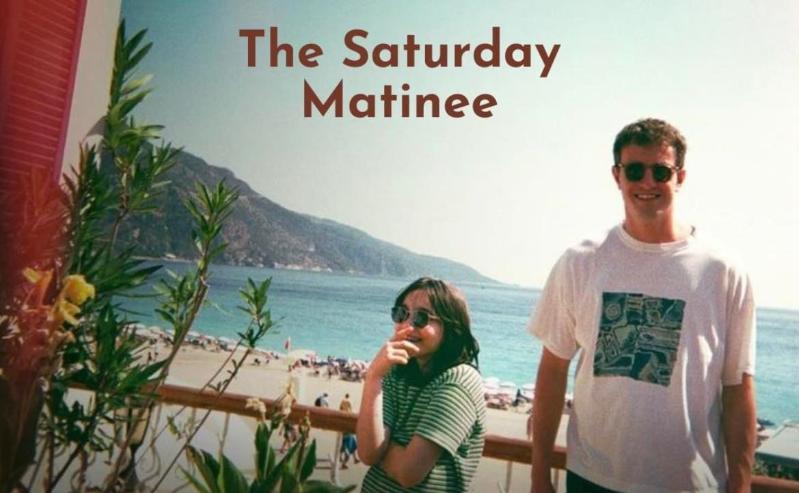
Starring Paul Mescal as Calum, and Frankie Corio as his daughter Sophie, Aftersun maintains a close focus on its dad-and-daughter-duo.
Aftersun seems like a story we’ve heard before; a young, divorced dad, struggling with drugs and his mental health, tries to be a good father to his daughter on their holiday to Turkey. Though, as Jack Underwood notes in Not Even This, a book on his experiences as a father: we’ll always need another love poem, or another death poem, for there will always be something more to say.
As Sophie records her summer with Calum on her camera, the film cuts from scenes of them lounging beside the pool to the future, where Sophie watches that same footage interspersed with scintillating and disorienting flashes of a rave. Calum’s and Sophie’s summer resort, which appears to be a haven, struggles to hold on to its idealistic image. Scenes play out in mirrors, water, or in her camera, an uncertain world seen through reflections, uncertainty, and fragments of memory. The pace of the story is slow, but inside the spare dialogue, we become aware of a bubbling tension, and a developing tenderness, between Calum and Sophie.
Subthemes unspool through the narrative; one that stands out to me is the sexual curiosity, and mortification, of the eleven-year-old Sophie. In a summer resort populated with young lovers, an observant child becomes an audience to a world without sexual inhibition. Troubling scenes are well delivered with a lightness of touch – Calum forgetting to go to sleep with his clothes on, and sleeping on Sophie’s bed instead of his own, while the child puts a blanket on him.
The film is filled with melancholia, wrapping itself in an eerie calm, but this is sprinkled with realistic humour; an effort to keep a brave face for and by the child. Childishness and humour appear when the story can’t bear to speak up and tell itself. Paul’s and Frankie’s acting is something truly wonderful, so that we understand through silences; our sadness filling the gaps in the storytelling.
The film breathes so silently and delicately that we wait for the moment where it all explodes – but it never comes. There is no closure, no neat ending. All we’re left with is the façade of calm where we began. It is a testimony against exposition, while a story, a very real one at that, shines its way through just the same.
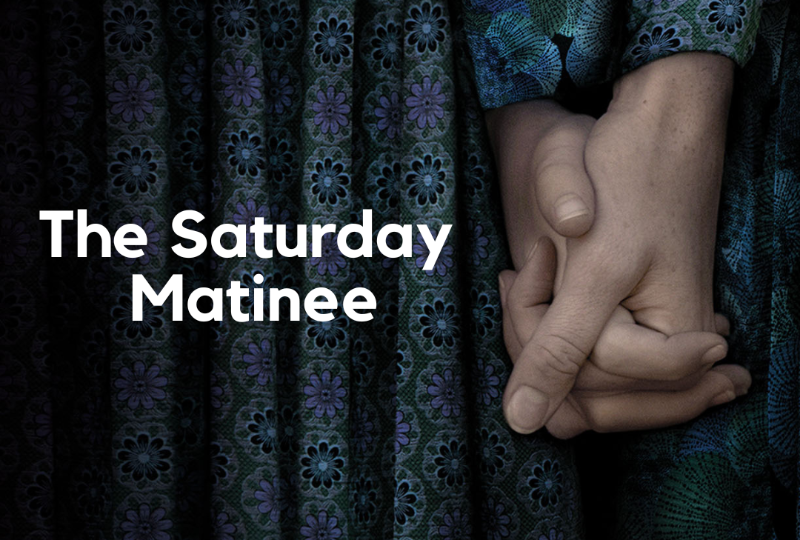
Women Talking is an adaptation of the book by the same name and begins the same way with the premise of an imagined response to a very real event that took place.
The film follows a council of women elected by the rest of the women in the isolated Mennonite colony to make the final decision for them all after everything they’ve suffered at the hands of their abusers: ‘Stay & Fight’ or ‘Leave’.
The film is pieced together mainly through conversation between the women of the council, where we learn of the atrocious acts committed against them, from toddlers to elderly women, and of their reservations as they decide what is to be done. The women are torn as they care for the boys who are not yet the men that abused them and don’t want to leave them behind, but they also know that if they stay, they endanger their own lives and that of the women that come after them. They know that things will not change. The ambiguous ending itself is an extended act of the female imagination, leaving the viewer and reader only with the hope that the women are safe after everything they have faced.
The director, Sarah Polley, does an excellent job of focusing the film on the women and women alone, with the narrator of the film being an unnamed woman, and with the only adult man to speak was the minute-taker August. She also does a great job with the dialogue, with hard-hitting dialogues and impactful moments that drove home the pain these women experienced and their hope for the future. Cinematographer Luc Montpellier also does a wonderful job with setting the tone for specific scenes using light, colour, and elemental settings really pulling you in to the story and making you feel the full impact of the women’s plight and their varied range of emotions from grief to anger and finally to hope.
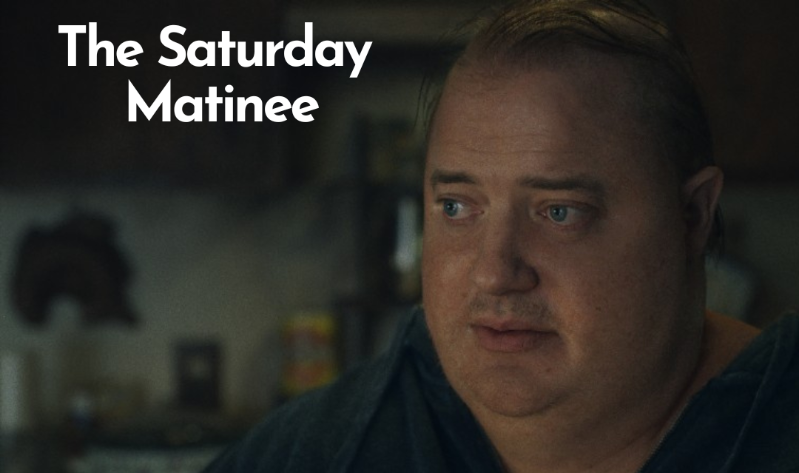
The Whale depicts the final five days of the depressed Charlie, a fat man whose health is rapidly failing. The film opens with an ending, promising that Charlie will die. We as the audience are made to suffer as we watch this man’s own destruction.
Darren Aronofsky’s auteurship wants both his characters and the spectators to suffer as much as possible. The pseudo-suffering in the film comes through overly dramatic scenes where Charlie binge-eats. These sequences are entirely voyeuristic, yet excessive in nature. Aronofsky is relying on a stereotypical portrayal of someone struggling with obesity. The emphasis on the ‘whale’ appearance of Charlie through the cinematography, animalising him, as well as the forceful metaphor of the Moby Dick essay, constantly draw on Charlie being ‘the whale.’
No, the real suffering of the film comes subtly. At one point, Charlie drops a key to a door. He grabs a claw mechanism to try and grab it, but ultimately fails to obtain the key. We don’t get an excessive bending-down sequence. Instead, Charlie admits defeat, showcasing the everyday horrors he faces. Most important, though, are the relationships, the ones Charlie builds and breaks, bends and molds, each person suffering with the looming fact that Charlie is going to die. Hong Chau’s performance as Liz is a personal highlight, in an intense and constant battle between saving her friend and ultimately ending his suffering.
We suffer, particularly through the actors’ performances, the raw and intensity of them. This drives the film, and it relies on its performers to work. Eventually, we find empathy, proving a more worthy use of the art of suffering, beyond excessive grotesqueness.

Warning: This review discusses events from the whole film, including the ending.
Tár shows the life cycle of an abuser, depicting the entangled relationship between creativity, spectacle, and abuse.
Lydia Tár is an archetype of power, another ‘great artist’ in a line of controversial maestros. This film could be a portrait of the mastery of a powerful abuser, from the brazenly familiar titling to the self-important opening credits; it could be enraptured by the inevitability and ineffability of the powerful, the talented, the spectacular. This is not the story director Todd Field tells, however. He fragments that narrative, inverting an almost biopic-like structure by condemning and exposing Tár instead of empathising with and exalting her.
A second structure emerges as a result, bending the film’s genre with ghostly off-screen screams. Like any skilled abuser, Tár frames the narrative to portray herself as victim to this tragic haunting: "I was attacked," she flippantly lies about injuries accidentally sustained while pursuing a new victim. In the end though, when faced with the reality of her predatory behaviour, Tár runs vomiting from the scene, her composure and control vanishing as the spectre of her actions condemn her.
Like a conductor’s second hand, one half of this story shapes the other, and when Tár’s exploitation is exposed, the destruction of her reputation, an abuser’s main asset, becomes inevitable. She goes from European cultural icon to uppity Staten Islander conducting at video game conventions.
Like any life cycle, abuse perpetuates and grows beyond itself. On a visit to a river in the Phillipines, an exiled Tár is told that crocodiles lurk in the water, leftover from a chaotic Hollywood production. They are the consequences of spectacle, of abuses of power, and much like the ghosts of victims, legacies of historic abusers, and Tár’s regenerating potential for further abuse, Field warns us: “They survive.”

“Those in power write the history, while those who suffer write the songs.” In gorgeous black-and-white photography, North Circular builds these songs into the size of myths, of the land Empire built and left behind, of the people who came, stayed, and struggled to live.
At the end of the credits, Luke McManus’ documentary North Circular tells us that “Those in power write the history, while those who suffer write the songs.” North Circular builds a mosaic of its titular road which runs across Dublin’s North Inner city, from the westerly neighbourhoods of Phoenix Park to the estates and warehouses of the Docklands.
Locals gather in pubs, listening intently to old songs played by local artists, both professionals and enthusiasts. The camera explores ruins of old institutions, mental hospitals, and Magdalene laundries, haunting communities still. The film rests on hidden details, carvings on walls, statues, pillars; here, a face, near cartoonish with mouth wide open, hidden on a street corner. New squatters make a home in an abandoned terraced house, while taking the time to keep the prized possessions of its deceased former resident carefully filed away. These places, these communities, the eccentrics and pubs, families and soccer teams, their shameful pasts and uncertain futures, these are what North Circular is concerned with. In gorgeous black-and-white photography, the film builds these stories into the size of myths, of the land Empire built and left behind, of the people who came, stayed, and struggled to live.
But what is black-and-white photography if not a myth-making device? When we see it, we think of something timeless, something disconnected from the current world, already past. Whatever moment has been filmed, has already gone. This photography plays on the nostalgia inherent in the film medium, aestheticizing the very nature of the image; that the image captures what had already passed. McManus seems to have created, in this form at least, not just a portrait of this community, but a eulogy to it.
This is ironic, considering how the film focuses in on a campaign that saved one of the North Circular’s iconic pubs, the Cobblestone, and how it ends on a gig by the musician Gemma Dunleavy, whose upbeat music breathes new pride to these neighbourhoods. This road is alive with life, despite the gentrification. Though, perhaps this nostalgia comes with a focus on the music of this island. After all, many of our great songs, the ones that people remember, are dirges for the dead.
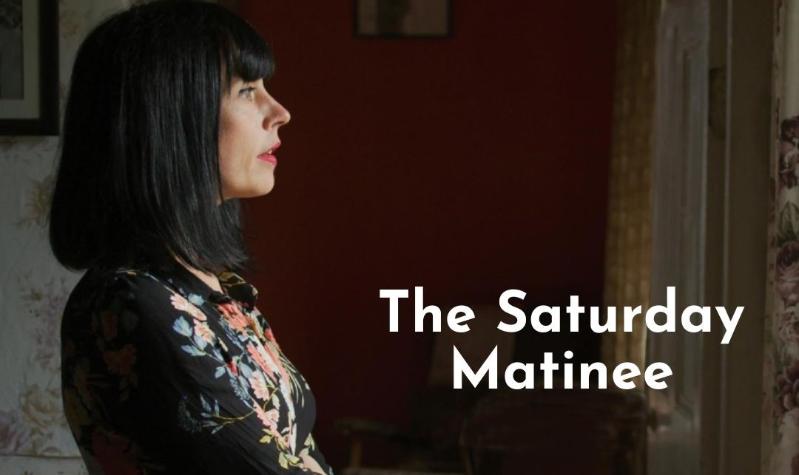
Ben Webb and Hilary McDaniel harmonise their thoughts on new release, Clouded Reveries, an intimate exploration of Doireann Ní Ghriofa's world and creative process.
Ben: This is a beautiful film, not only in its images, its rich readings in Irish and English, but in the very structuring by which it enacts the poetic worldview Ní Ghríofa unfolds.
All her life, her poetry, she says, has been circling down and down, deeper and deeper into the same themes; she wonders what there will be after a lifetime of this. Many poets might say this anxiously, but her eyes widen with excitement.
The film itself is a deepening circule, the viewer floating in the ‘underground river’ — a metaphor through which she later describes the mysterious surfacing of experience into poetry.
The centre of the film, and Ní Ghríofa’s experience, is her granny Mai’s house in rural Co. Clare. She speaks of the silence there; the voices of crow, clock, fire; all the stories told. The ordinary sings, here and throughout the film, in shots of concrete walls, Lego, hands folding clothes and tapping out rhythms of words. She “prais[es] the unique work women do“. She chants lost female voices: the daughter of an Ascendancy family watching her house burn, and the song of Eibhlín Dubh.
Almost embarrassed, she says these voices speak through her, ghosts in her throat. But her vision of life works by mystery, not mastery; to which end the visuals of the film work in harmony, with lingering close-ups turning the most ordinary things strange, into art. Seethe lichen-spotted black railing in Kilcrea, a red ribbon tied round it…
The film beautifully translates her work, convincing me that poetry and film must work together much more often than they do, to create from the melody of words and images, a song.
Hilary: I’m entirely in agreement Ben. The cinematography by Kev L Smith is strangely lush and magical; and you can wince at that description but there is no other way to elaborate on it. The drone scenes of Ní Ghríofa lying in a dense, grassy field are perfect accompaniments to dialogue by the poet herself, and needs no further explanation, where in other contexts they may seem gratuitous. She is a tantalizing subject, and her purple lips and hazel-green eyes are in director Ciara Nic Chormaic’s generous and fluid camerawork for 80% of the film. Here is a raven-haired delicate beauty, articulating the dissection of a body preserved in formaldehyde in an anatomy lesson, or describing her spiritual connection and channeling of Eibhlin Dubh Ni Chonaill the 18th century Irish noble woman, who wrote the poem at the core of Ní Ghríofa’s novel A Ghost In The Throat. The Irish and English are expressed in a gorgeous counter-point with subtitles which enrich each other.
My only complaints are that, having never heard of the author as Ben has, I would have loved more enticement to precede the film. At about forty minutes there was suddenly a close narration about the novel itself. I thought, ‘Wow, I would have loved this in the beginning!’, a help to lead me down this fascinating fairy trail. The only other actor in the film is a re-enactor in an eighteenth century dress. She is always portrayed in out of focus footage, and is inoffensive as far as re-enactors go. The question is, could the film do without her? I believe, yes. I also felt the lack of John Daly’s minimalist music score and found myself wanting more. Besides that, this was a film that never woke up from the dream submerged in Ní Ghríofa’s writing process and world, and really at the end, it never needed to.
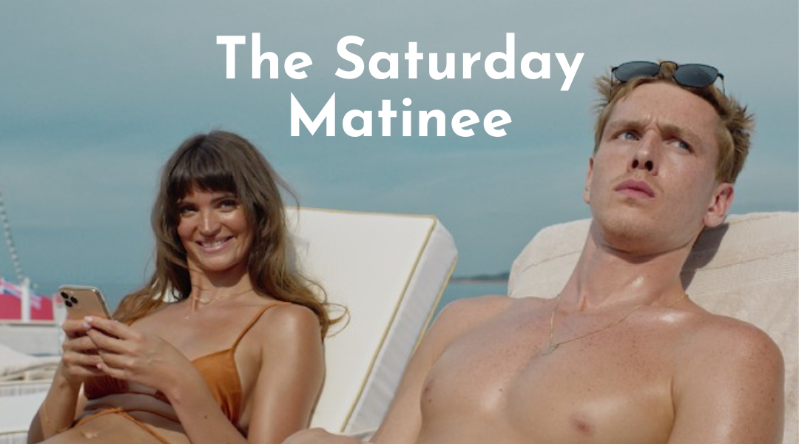
Triangle of Sadness believes that it knows more than its audience. Billed as an anti-capitalist satire where the rich suffer a shipwreck, it walks a thin line between satire and propaganda, as the cinematography is often at odds with the story.
The plotline hammers you with the lesson: capitalism is bad, the rich worse. However, the visuals highlight the poignancy of rich people suffering a shipwreck, and we end up rooting for them and their survival. Though the movie announces a scathing take on capitalism, its plotline depends on the sentiment that all is forgiven in adversity if we stick together.
It is unsurprising then that many of the ‘jokes’ are insensitive yet delivered as punch lines. We are supposed to laugh at humanity’s expense as intersectionality brutally collapses. One of the characters, Therese, is in a wheelchair and has a speech impediment. She is only able to say the German phrase ‘in den wolken’ (‘in the clouds’), and exclaims it repeatedly in moments of distress. Given that the rich are painted as entitled and annoying, it is suggested that Therese is much the same as her fellow customers.
However, when the camera focuses on Therese, we see a woman struggling to save her own life. When Therese asks for help, it is not entitled, like the group of rich men who can’t be bothered to catch a fish, but depend on women for their lives. The other survivors abandon and neglect Therese, and only when they hear her scream her phrase do they turn to rescue her – is this supposed to be funny? As a terrible attempt at dark humour, it is hugely insensitive and ableist.
One of the characters, Dimitry, accuses the only main Black character, Nelson, of being a pirate. Given Nelson has not been shown on screen before, we are made to question this. Even though this is narratively plausible, this does not excuse that Dimitri’s accusations towards Nelson are not supported by any evidence except his ignorance. Although this scene is pertinent and invites the audience to engage, it is presented as a ‘joke’. Unsurprisingly, towards the end, all seems forgiven as Nelson shaves a relaxing Dimitry’s chin. As a satire on society, Triangle of Sadness could have more impact if only it understood its own politics.
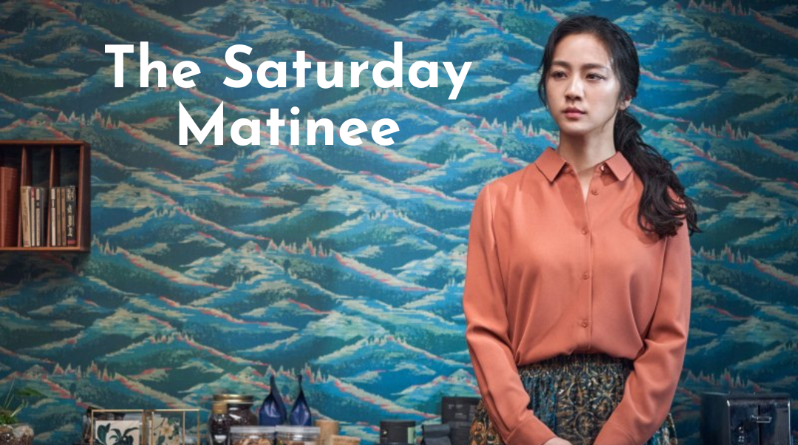
In some ways, Park Chan-wook’s Decision to Leave is treading familiar filmic ground: Park Hae-il plays Hae-Joon, a detective who tumbles into a romantic and sexual obsession with a suspect, Seo-rae (played by Tang Wei), accused of murdering her husband.
From the title drop to the end credits, Chan-wook plays with an impressive amount of genre-hopping fire: a tense detective mystery, a surreal erotic thriller, and (at times) a pretty sweet romantic comedy.
Seo-rae is a classic femme fatale: mysterious & seductive, dangerous & uneasy. Both Park’s script and Tang Wei’s performance, however, take the best of the trope and elevate it. Stories of obsession are too often also stories of dehumanisation, but Decision to Leave refuses to depersonalise its protagonist’s object of fascination. At times, Hae-Joon’s obsession is surface level (isn’t obsession always?) but Seo-rae never is. Exactly what she is feeling isn’t always clear, but it’s clear she is feeling with a vicious depth.
Obsession is rendered in a number of striking ways: Seo-rae turns a corner, and the detective is lying in wait, invisible to her but rendered sharp and hungry to the audience; Hae-Joon is going about his business, and a phone vibration stills him, another text to analyse; she leans forward to apply chapstick to his lips, and they’re both frozen for a moment, because – it turns out – they’re both consumed.
Despite the vast and uncompromising scenic moments, and the intricate, stylish plotting, this is an incredibly restrained film. The mystery reveals itself slowly but never ploddingly. Sex is superseded by a subtler sensuality, and violence – while horrifying – is seen mostly through its aftermath. At its very best, Decision to Leave uses this restraint to forecast the delicious perils of coming undone.
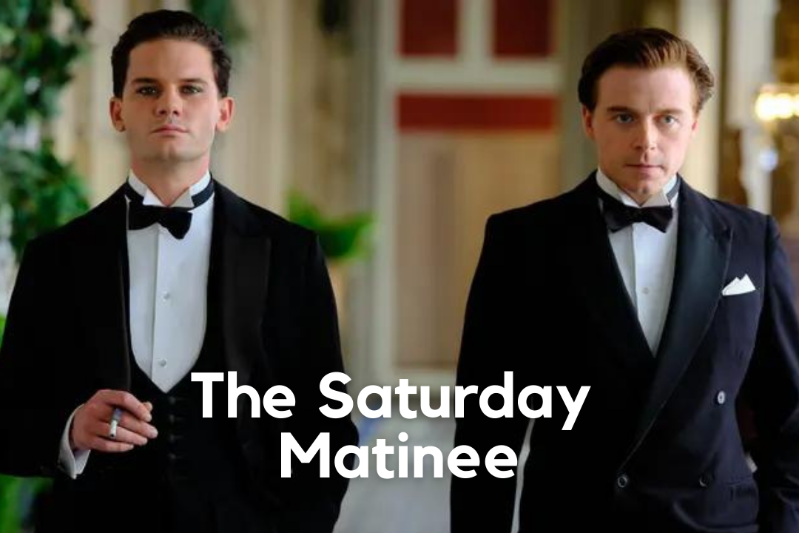
Director Terence Davies’ Benediction refuses easy denotation – it is a montage-work, a re-enactment, a chamber piece, a melodrama, a comedy, a psychological study, a love story, a death story, a biopic, an anti-biopic.
It stops and starts, conforming to no consistent register; an aesthetic undermined by the intrusion of distant voices and decaying newsreel and the sense that time is out-of-joint. It is a retelling of gay history through someone who somehow navigated its centre while living on its peripheries. Most importantly, it is a film about trauma, of war, of repression.
Its subject, Siegfried Sassoon (as played by both Jack Lowden and Peter Capaldi in twin performances across time), is a poet reduced by history to the twin states of War Poet and Tragic Homosexual. Sassoon was changed by the first world war, and Capaldi has never given a greater performance than as a man who has lived through his life the long-way-round carrying its ghosts upon his back. In its wake, he cannot say what he means, nor can those around him. He becomes increasingly self-denying, blaming the cruelty of others for the cruelty he begins to enact himself. Still, he wants to touch and to be touched in return, but he cannot articulate what kind of touch he needs just as he cannot decode that which is wanted of him. This is his problem, that he sees everything as a problem of language, rather than addressing the need for sensation. He cannot just ‘be’, as he feels his being to be irreparably compromised, subject to enclosure and confusion, salvageable only in increasingly-meticulous and outmoded artistic expression and a pivot towards outward respectability. This is perhaps why Terence Davies, a man unashamed to publicly-articulate his lifelong struggle with a uniquely queer loneliness, has been able to produce a film of such unprecedented empathy, with a paucity of easy answers.
Benediction is unafraid to depict pain through the ageing of faces, the confusion of want and Siegfried’s refusal to be happy. There are moments of extraordinary tenderness and understanding though, of quiet solidarity. So much is communicated within the slightest gestures, and the phenomenon of humanity is never condemned or seen as anything other than a phenomenon. There may be ghosts, but Davies knows that cinema is made from ghosts. Benediction draws pure cinema from verse.
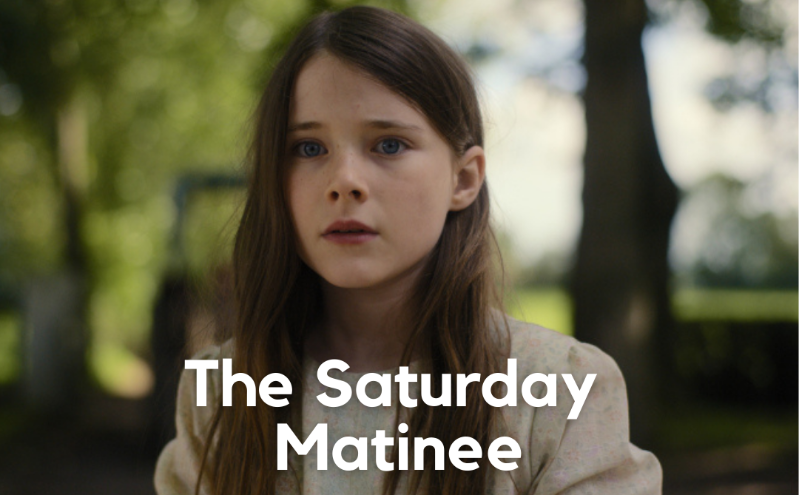
An Cailín Ciúin, or The Quiet Girl, is the Irish language debut from writer and director Colm Bairéad, based on Claire Keegan’s 2010 novella Foster.
This is a quiet movie, guiding your hand through the countryside of Ireland and its people with gentleness and care. Set in 1981, a young girl named Cait leaves her impoverished, emotionally cold family to stay with a childless couple for the holidays. Cait is a withdrawn observer who struggles to make friends, but during her time away she feels deep affection, perhaps for the first time, and must reconsider the definition of family.
An Cailín Ciúin builds slowly, showcasing the world from the protagonist's perspective. Shot on 35mm with a 4:3 aspect ratio, there’s a claustrophobic feeling to the naturally lit shots of rooms and hallways that reflect the characters’ entrapment. Kate McCullough’s camerawork brings out the humanity in every frame, using static shots and slow zooms to rest on her subjects, pulling you further into the intimacy they feel. The little details that make a place special are brought out; the camera lingers on train-patterned wallpaper, soap smeared arms, a macaroon resting on a table. Most scenes are unaccompanied by score, soaking the audience in Cait’s silence, so when Stephen Rennicks’ beautifully minimalistic additions do come in, their impact is felt.
From its warm cinematography to its minimal script, An Cailín Ciúin lifts up quietness, gentleness, and small acts of love. The characters grow in compassion and understanding, proving how the little moments of life can make a big difference in deciding who to trust. From helping scrub floors to offering someone a tight embrace, Colm Bairéad’s film proves that sometimes you don’t have to say anything to tell someone you love them.
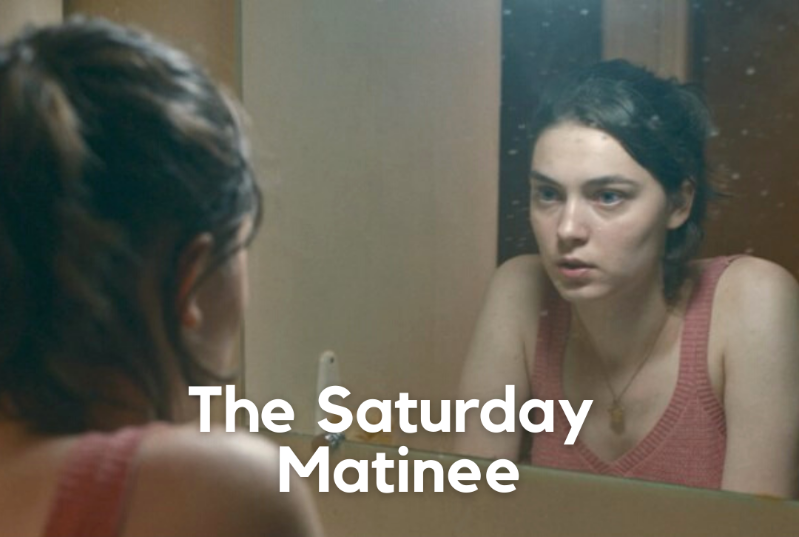
A banal horror; the missed period. Mundane evil and long periods of pain define Happening, directed by Audrey Diwan. Which is to say, I was on the edge of my seat and felt physically ill by the third act.
Happening is an adaptation of Annie Ernaux's memoir which traces her pregnancy and numerous attempts at trying to obtain an abortion as a university student. We begin with Anne, played by Anamaria Vartolomei, in the hazy end of a university semester and follow her to the cold hopelessness of seeking help to the fever pitch of the final act. Time in the movie is marked by captions reminding us how many weeks along the pregnacy is. The reminders externalise the urgency that bubbles under the surface of the narrative.
Happening is a dutiful portrayal of what illegal abortion is and never shys away from it, and yet never borders into a territory in which it is for our entertainment. The sunny hope of the first act wanes along with Anne's naivety that an abortion will be an easy thing to obtain. While a period piece, being set in rural France in 1963, it still resonates with stories that emerged during the Repeal the Eighth campaign in the Republic of Ireland in 2016 and stories that emerge from Northern Ireland even now.
The perniciousness of a misogynistic society is found in every interaction Anne has when she confesses she is pregnant. The GP who prescribes her an anti-miscarriage drug when she approaches him for an abortion. The married male friend who attempts to sleep with her as she is already pregnant. The friend who stops talking to her after finding out she is intent on getting the abortion. The abortionist who tells her she'll stop the procedure if she makes a sound, to the prudish girls in the shower room asking if the rash Anne has is syphilis. Yet, these are also the people who save her. The abortionist who takes her hand as she inserts the wand, the classmate in a prudish night dress gown who hands her the scissors to cut the umbilical cord and calls the doctor.
It is pieces of media like Happening that remind us why reproductive rights activists do what they do. Diwan’s film shines a harsh light on what it means to deny people autonomy, and above all, is one of the strongest tools that exists in a political movement: an unflinching story.

How do we know what’s important? Joachim Trier’s The Worst Person in the World reflects on this question through the chronicles of four years in the life of Julie, a thirty-year-old woman who feels like Bambi on ice, utterly out of control as she attempts to navigate her place in the world.
Flipping from professions as a doctor to a psychologist to a photographer, Julie hasn’t a clue how she wants to live her life or who she wants to live it with, especially when she is given a glimpse into a life that could be permanent. When she’s faced with the possibility of having kids or pursuing a new partner, Julie does the only thing she knows how to: wait, and see where time leads her.
“Time” here is presented in twelve chapters, the only structure we can rely on in a story full of chaos and uncertainty. Each chapter is accompanied by a title that foreshadows the content to come, allowing the audience to set their expectations before entering a scene. Unlike Julie, we get the luxury of knowing what’s to come.
The film wanders with Julie around the streets of Oslo following each reckless decision she makes. Kasper Tuxen’s camerawork, much like our protagonist, is rarely stationary, gently mirroring the character's movements, shaking ever so slightly on shots that would traditionally remain static. Trier’s script honestly appeals to a generation who feels pressure to reach a place of certainty about their futures. Julie is constantly waiting for some greater alternative, some confirmation of what’s important, but sometimes what’s best is right in front of us. Sometimes it’s not enough to wait for certainty–we must compromise, make shortsighted decisions and figure it out in the process.
The Worst Person in the World celebrates wandering, confusion, and processing. The film settles on a comma rather than a period, suggesting that what is most important is not finding an answer, but holding close to those who share in your questioning.
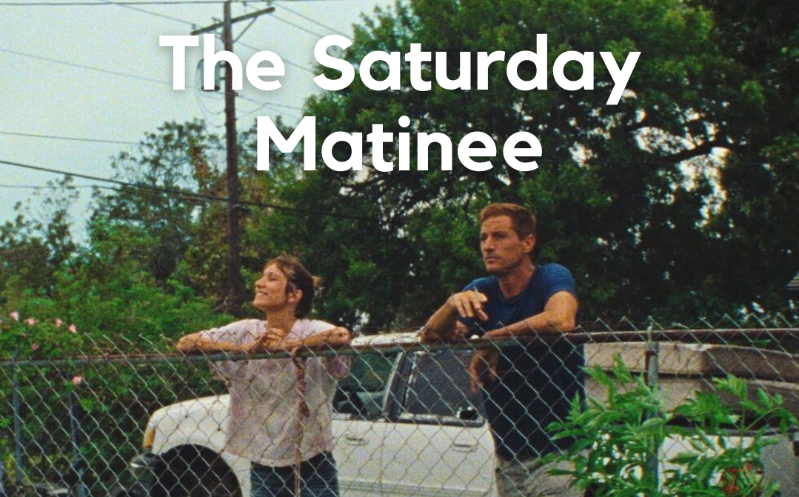
Red Rocket is a film about a bad person who does bad things, a user who uses whilst possessing the ability to buy into his own delusions.
It is a film that has the courage to force its audience to draw its own conclusions, to question its own responses without guidance. Mikey Saber, played by Simon Rex, is our eyes -- we follow his worst-made-plans, his predation. He is in many ways the hero his country and his country’s cinema deserves, a hole without a donut who can only break what he touches. Rex is fearless, making himself the literal butt of the joke whilst performing every action with the kind of manic intensity that calls to mind both Jerry Lewis and Johnny Knoxville.
Few directors know how to zoom in like Sean Baker, both in terms of deployment of the lens and in his innate understanding of the small boring particularities and immoralities that define a country in slow decay. He is a director of rare empathy, the kind of courageous empathy that enables him to show people as they are. There is an innate courage of depiction that unifies all of his work, a love of humanity that acknowledges the contradictions and cruelties of humanity as part of that love. We hear Trump & Clinton on the television, but we witness a ‘flyover town’ wherein none of that makes any difference -- a world either ignored, dismissed, or used.
This is a film that evokes Jesse Stiles’ observation that “if anything could mean nothing at all while signifying everything at once, then this must be the centre of America.” It is the only film on record with a title that evokes both a dog’s penis and the U.S. national anthem. And it is very, very funny.
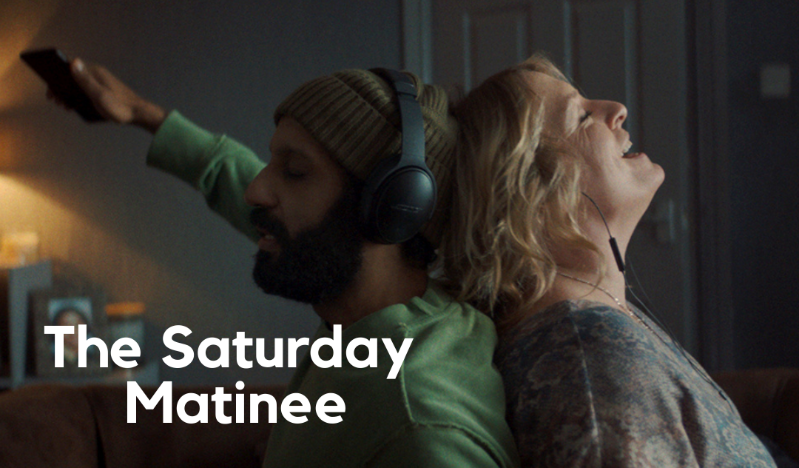
It’s an ancient cliché to infer that music be the food of love, but in Ali & Ava, the cliché comes alive.
A joyful romance set across two neighbourhoods and the surrounding country of director Clio Barnard’s beloved Bradford, the film depicts the kind of lovers we don’t often see on camera. Ava is a teaching assistant and recent grandmother, hiding the abuse of her late husband from her son. Ali is a techno-obsessed British-Asian musician living with his younger wife as they hide their separation from his family. When Ali and Ava meet the chemistry crackles; the spark between the two leads, Claire Rushbrook and Adeel Akhtar, is the thing that movies are made for. Together, Ali and Ava see a future they didn’t realise was missing.
Ava listens to country and traditional Irish music, and she lights up when she talks about it, filling her with images of her father singing in the pub. Ali retreats to music in times good and bad, dancing to the heavy beats coming from his large boxy headphones, the movement and energy keeping him alive and connected to the world around him. Ali and Ava get to know each other through their music, teasing each other about their preferences, sharing what it means to them.
At her house, they wear their own headphones and dance to their own music, the sound mix sliding between their own tunes, shifting us from one perspective to another. Then, they share their music too; Ali listens to Bob Dylan, Ava Daniel Avery’s techno. The scope of their world expands with the experience of the other. Music helps them connect with the supporting characters too; in one memorable scene, Ali calms the suspicious children on Ava’s estate throwing rocks at his car by blasting a song they can all sing together. Through their music, the lovers share their worlds, and assert that we are all living in the same one.
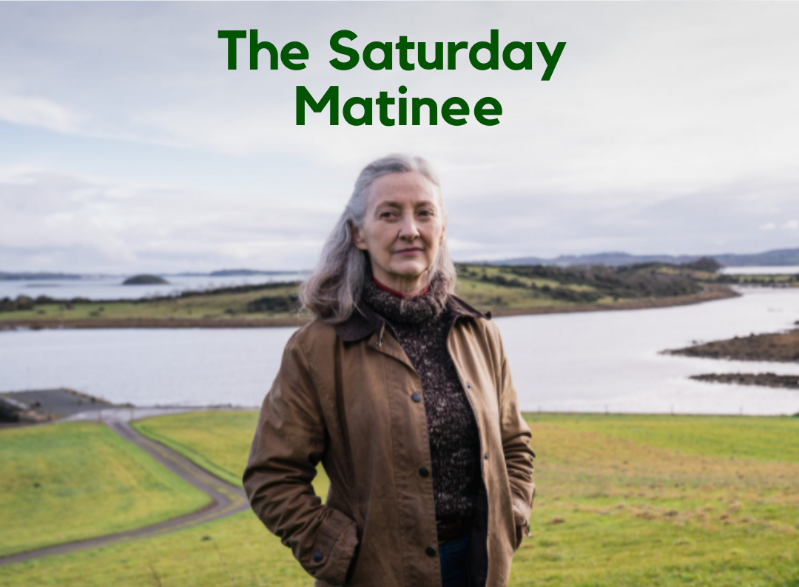
Damian McCann’s Irish language thriller Doineann, set on a remote island, is an example of the exciting output in the Northern Irish cultural scene at the moment.
On the surface this is a classic, pacy whodunnit with all the necessary ingredients: a missing family, encroaching criminal entities and a (literal) incoming storm. But it is also a complex representation of male violence and a quiet masterpiece of tension, from the claustrophobic island setting with its recurring motif of broken transport to the ever hovering threat of Dublin’s criminal underside.
Household items are intelligently used as narrative vehicles as well as talismans of the deceptive domestic situation between Tomás and his wife Siobhán, from a baby thermometer used as a murder weapon to a bottle of ketchup misplaced deliberately to gaslight Siobhán. In scenes in the house, the mise-en-scene produces excellent levels of tension, like one simmering shot while Tomás argues furtively on the phone while the baby cries and an egg burns on the stove.
It is rewarding to have the chance to watch an excellent Irish language film at our local independent cinema, and the film deliberately plays with language and power in interesting ways too. English is spoken by Tomás as he tries to convince a GP that Siobhán has postnatal depression, notably in her absence, and when his anger explodes on phone calls. English in Doineann is the language of male power and violence, whereas the tone of Irish dialogue is often measured and collected in comparison, especially in Brid Brennan’s focal performance as retired detective Labhaoise. This sense of antithesis culminates in the startling use of a perspective switch, a kind of halfway volta from which the film begins to feel more serious and resolute.
Billed as ‘Storm’, it is worth noting that Irish speakers have taken to social media to point out that ‘Doineann’ translates more accurately to ‘Hurricane’. Yet Doineann, the film, is best described as the moments when a storm gathers: moment to moment this is a neatly assembled thriller that takes its time.

Mike Mills last two features, Beginners and 20th Century Women, track the relationships he has with the people who raised him. C’mon C’mon finds Mills turning that parental gaze inward, making a film loosely based on his experiences of becoming a parent.
The film follows an audio journalist, Johnny, played by Joaquin Pheonix in a gentle Her mode, who minds his nephew Jesse (played by a brilliant and eccentric child actor named Woody Norman) for a few weeks while Jesse’s mother Viv (Gaby Hoffman), tends to her husband’s mental health crisis.
In an interview, Mills mentions that they shot the film in black and white to let the film lean into its own sentimentality. Robbie Ryan’s cinematography stays close to the characters, focusing on the joyful intimacy of the ways we look and touch one another. Mills’ editing in C’mon is essayistic, cutting around the timeline to emphasise moments, and including Johnny reading real-world texts as he explores parenting. Throughout the film, Johnny interviews real kids from across America about their thoughts on the future. He’s constantly amazed by the kid’s emotional intelligence, their ideas, hope and energy. Listening to kids lets them know their voices are worth being heard.
Mills’ work is attuned into the everyday tragedy – or miracle – that we can’t understand everything about a person, no matter how much we love them. For much of the film Johnny struggles with his own situation, his past loves and his relationship with Viv. In becoming Jesse’s temporary parent, he’s forced to talk honestly about his own feelings to prepare Jesse for a life that will never turn out the way you think. It’s better, perhaps, to give kids the skills to navigate their feelings honestly in an unreliably beautiful world, than teach them that that same world will keep them safe.

Céline Sciamma follows up her masterpiece Portrait of a Lady on Fire with the new film Petite Maman. Maman is a decidedly low-key affair, a slim 79-minute film with an amusingly high concept; what if you could meet your mother when she was a child?
Eight-year old Nelly’s (Joséphine Sanz) grandmother has just passed away, and she heads to her old house at the edge of a forest to help her parents clean out the old house, haunted with memories. Her mother, Marion (Nina Meurisse), finds the process unbearable and despite Nelly’s best attempts to cheer her up, goes away for a few days. Lonely, Nelly finds herself exploring the woods next door, where she meets another young girl who looks exactly like her; also named Marion (played by Joséphine’s twin, Gabrielle).
In classic Sciamma fashion, however, the film’s fairy tale set-up is downplayed with naturalism, making the break from reality seem even more magical. There are no explanations or fairies; this is just what is happening. Scenes play out in long wide takes, with long gaps between dialogue and no music. Sounds are placed high in the mix, translating a huge amount of intimacy as in the scene where Nelly shaves her father’s face. You can almost feel the scrape of the razor on his skin. There’s something in it that speaks to the tactility of childhood, when all sensations feel new.
With Maman, Sciamma returns to the themes of childhood that run through her earlier work, but with a different focus this time. Like Sciamma’s break-out trilogy of films, Water Lilies, Tomboy and Girlhood, Maman is a story about the journey between childhood and adulthood; but unlike those films, it tells its story in reverse. Nelly discovers the child in her mother, rather than vice versa. Through the magic of the film’s premise, she recognises her mother’s grief, and grows to understand her a little better.

In Wes Anderson’s newest film The French Dispatch, the editor of the eponymous, fictional magazine (Bill Murray) gives all his writers the same advice; “Whatever you write, try to make it sound like you wrote it that way on purpose.”
The French Dispatch is an anthology film, its structure replicating that of the fictional magazine, modelled after the New Yorker. There are three feature articles about the fictional French city Ennui-sur-Blasé, some detours, and the odd scene following the editors of the magazine putting the issue together. Everything about the film is playful; each moment, shot, gesture, line of dialogue or production detail is packed with unexpected wit. The balance is delicate; having so many unexpected things happening on screen almost overwhelms. Yet for me, the ultimate effect is so seemingly controlled that it retains a singular vision.
While the film structures itself around the articles, it’s really about the journalists who write them. Each section is framed by a journalist as they narrate their article, becoming a part of their subject’s lives whilst trying to stay subjective. These characters are observers first, whose relationships with their subjects, while meaningful, will always be fleeting and transactional. They try to hide in the stories they tell, but end up revealing themselves in their reporting.
Bill Murray’s character becomes a guide to the reporters, looking after their interests while pushing them to reveal those hidden parts of themselves. These writers become his subjects in the process; Murray doesn’t get much screen time, but through his absence the film shows itself as his vision. All the chaotic flourishes and strange digressions become one with his erudite, detached persona; much like the director himself.
Anderson’s films are a vibe unto themselves, but Dispatch feels like a culmination to his approach, an anthology that embraces its distractions and flights of fancy. For better or worse, it feels like he made it that way on purpose.

Since 1968, Queen's Film Theatre has been bringing the best independent, international, and cult cinema to Northern Ireland. Behind the unassuming doors at 20 University Square, is a haven for film fans, and students of film, drama and screenwriting.
Find out What's On and book here...
